Pierre-Simon Laplace
description: French mathematician and astronomer (1749-1827)
74 results
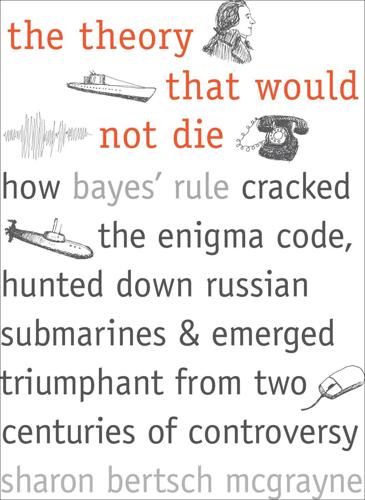
The Theory That Would Not Die: How Bayes' Rule Cracked the Enigma Code, Hunted Down Russian Submarines, and Emerged Triumphant From Two Centuries of Controversy
by
Sharon Bertsch McGrayne
Published 16 May 2011
In the end, this is the story of two friends, Dissenting clergymen and amateur mathematicians, whose labor had almost no impact. Almost, that is, except on the one person capable of doing something about it, the great French mathematician Pierre Simon Laplace. 2. the man who did everything Just across the English Channel from Tunbridge Wells, about the time that Thomas Bayes was imagining his perfectly smooth table, the mayor of a tiny village in Normandy was celebrating the birth of a son, Pierre Simon Laplace, the future Einstein of his age. Pierre Simon, born on March 23, 1749, and baptized two days later, came from several generations of literate and respected dignitaries.
…
Belhoste, A. Dahan and A. Picon. Seyssel. ———. (1995) Lavoisier et ses collaborateurs: Une Équipe au Travail. In Il y a 200 Ans Lavoisier, ed., C. Demeulenaere-Douyère, Paris: Technique et Documentation Lavoisier. 55–63. ———. (2005) Pierre Simon Laplace, 1749–1827: A Determined Scientist. Harvard University Press; (2004) Le Système du Monde: Pierre Simon Laplace, Un Itinéraire dans la Science. Trans. Patrick Hersant. Éditions Gallimard. These are the same book, the original in English, the translation in French. These books are my primary sources for Laplace’s life. Hald, Anders. (1998) A History of Mathematical Statistics from 1750 to 1930.
…
In the first-ever account of Bayes’ rule for general readers, Sharon Bertsch McGrayne explores this controversial theorem and the human obsessions surrounding it. She traces its discovery by an amateur mathematician in the 1740s through its development into roughly its modern form by French scientist Pierre Simon Laplace. She reveals why respected statisticians rendered it professionally taboo for 150 years—at the same time that practitioners relied on it to solve crises involving great uncertainty and scanty information, even breaking Germany’s Enigma code during World War II, and explains how the advent of off-the-shelf computer technology in the 1980s proved to be a game-changer.

From eternity to here: the quest for the ultimate theory of time
by
Sean M. Carroll
Published 15 Jan 2010
Even in Newtonian gravity, there’s nothing to stop us from contemplating an object so massive and dense that the escape velocity is greater than the speed of light, rendering the body “black.” Indeed, the idea was occasionally contemplated, including by British geologist John Michell in 1783 and by Pierre-Simon Laplace in 1796.73 At the time, it wasn’t clear whether the idea quite made sense, as nobody knew whether light was even affected by gravity, and the speed of light didn’t have the fundamental importance it attains in relativity. More important, though, there is a very big distinction hidden in the seemingly minor difference between “an escape velocity greater than light” and “light cannot escape.”
…
PART THREE ENTROPY AND TIME’S ARROW 7 RUNNING TIME BACKWARD This is what I mean when I say I would like to swim against the stream of time: I would like to erase the consequences of certain events and restore an initial condition. —Italo Calvino, If on a Winter’s Night a Traveler Pierre-Simon Laplace was a social climber at a time when social climbing was a risky endeavor.102 When the French Revolution broke out, Laplace had established himself as one of the greatest mathematical minds in Europe, as he would frequently remind his colleagues at the Académie des Sciences. In 1793 the Reign of Terror suppressed the Académie; Laplace proclaimed his Republican sympathies, but he also moved out of Paris just to be safe.
…
It seems unlikely that Napoleon read the whole thing (or any of it), but someone at court did let him know that the name of God was entirely absent. Napoleon took the opportunity to mischievously ask, “M. Laplace, they tell me you have written this large book on the system of the universe, and have never even mentioned its Creator.” To which Laplace answered stubbornly, “I had no need of that hypothesis.”103 Figure 31: Pierre-Simon Laplace, mathematician, physicist, swerving politician, and unswerving determinist. One of the central tenets of Laplace’s philosophy was determinism. It was Laplace who truly appreciated the implications of Newtonian mechanics for the relationship between the present and the future: Namely, if you understood everything about the present, the future would be absolutely determined.

Algorithms to Live By: The Computer Science of Human Decisions
by
Brian Christian
and
Tom Griffiths
Published 4 Apr 2016
What’s more, if someone pressed us, “Well, fine, but what do you think the raffle odds actually are?” we still wouldn’t know what to say. The answer to this question—how to distill all the various possible hypotheses into a single specific expectation—would be discovered only a few years later, by the French mathematician Pierre-Simon Laplace. Laplace’s Law Laplace was born in Normandy in 1749, and his father sent him to a Catholic school with the intent that he join the clergy. Laplace went on to study theology at the University of Caen, but unlike Bayes—who balanced spiritual and scientific devotions his whole life—he ultimately abandoned the cloth entirely for mathematics.
…
If we drop a needle onto a lined piece of paper, he asked, how likely is it to cross one of the lines? Buffon’s work showed that if the needle is shorter than the gap between the blines, the answer is 2⁄π times the needle’s length divided by the length of the gap. For Buffon, deriving this formula was enough. But in 1812, Pierre-Simon Laplace, one of the heroes of chapter 6, pointed out that this result has another implication: one could estimate the value of π simply by dropping needles onto paper. Laplace’s proposal pointed to a profound general truth: when we want to know something about a complex quantity, we can estimate its value by sampling from it.
…
(The notation p(d|h) means the “conditional probability” of d given h—that is, the probability of observing d if h is true.) To convert this back into a probability of each h being true, we then divide by the sum of these likelihoods. Laplace was born in Normandy: For more details on Laplace’s life and work, see Gillispie, Pierre-Simon Laplace. distilled down to a single estimate: Laplace’s Law is derived by working through the calculation suggested by Bayes—the tricky part is the sum over all hypotheses, which involves a fun application of integration by parts. You can see a full derivation of Laplace’s Law in Griffiths, Kemp, and Tenenbaum, “Bayesian Models of Cognition.”

Superforecasting: The Art and Science of Prediction
by
Philip Tetlock
and
Dan Gardner
Published 14 Sep 2015
Edward Lorenz shifted scientific opinion toward the view that there are hard limits on predictability, a deeply philosophical question.4 For centuries, scientists had supposed that growing knowledge must lead to greater predictability because reality was like a clock—an awesomely big and complicated clock but still a clock—and the more scientists learned about its innards, how the gears grind together, how the weights and springs function, the better they could capture its operations with deterministic equations and predict what it would do. In 1814 the French mathematician and astronomer Pierre-Simon Laplace took this dream to its logical extreme: We may regard the present state of the universe as the effect of its past and the cause of its future. An intellect which at a certain moment would know all forces that set nature in motion, and all positions of all items of which nature is composed, if this intellect were also vast enough to submit these data to analysis, it would embrace in a single formula the movements of the greatest bodies of the universe and those of the tiniest atom; for such an intellect nothing would be uncertain and the future just like the past would be present before its eyes.
…
A Presbyterian minister, educated in logic, Bayes was born in 1701, so he lived at the dawn of modern probability theory, a subject to which he contributed with “An Essay Towards Solving a Problem in the Doctrine of Chances.” That essay, in combination with the work of Bayes’ friend Richard Price, who published Bayes’ essay posthumously in 1761, and the insights of the great French mathematician Pierre-Simon Laplace, ultimately produced Bayes’ theorem. It looks like this: P(H|D)/P(-H|D) = P(D|H) • P(D|-H) • P(H)/P(-H) Posterior Odds = Likelihood Ratio • Prior Odds The Bayesian belief-updating equation In simple terms, the theorem says that your new belief should depend on two things—your prior belief (and all the knowledge that informed it) multiplied by the “diagnostic value” of the new information.
…
Show me a pundit who does not make at least implicit forecasts and I will show you one who has faded into Zen-like irrelevance. 4. See James Gleick, Chaos: Making a New Science (New York: Viking, 1987); Donald N. McCloskey, “History, Differential Equations, and the Problem of Narration,” History and Theory 30 (1991): 21–36. 5. Pierre-Simon Laplace, A Philosophical Essay on Probabilities, trans. Frederick Wilson Truscott and Frederick Lincoln Emory (New York: Dover Publications, 1951), p. 4. 6. Yet even historians who should know better continue to make grand pronouncements like this one, by Oxford professor Margaret MacMillan, quoted in Maureen Dowd’s September 7, 2014, New York Times column: “the 21st century will be a series of low grade, very nasty wars that will go on and on without clear outcomes, doing dreadful things to any civilians in their paths”—a good summary of the recent past but a dubious guide to the world of 2083.
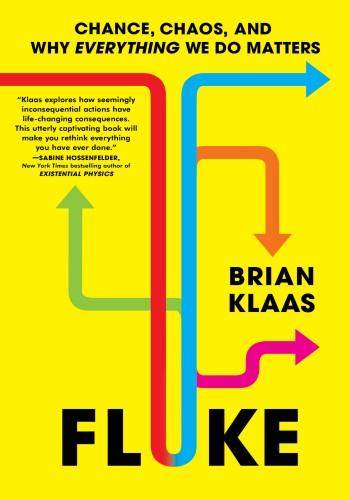
Fluke: Chance, Chaos, and Why Everything We Do Matters
by
Brian Klaas
Published 23 Jan 2024
Whenever you tug on one thread, you’ll always meet unexpected resistance because each is connected to every other part of the tapestry. The truth is, as Martin Luther King Jr. wrote in his letter from a Birmingham jail, “We are caught in an inescapable network of mutuality, tied in a single garment of destiny.” * * * In 1814, a French polymath named Pierre-Simon Laplace was grappling with the enduring mysteries of such an intertwined existence. Why are we so bad at predicting our futures? Why do events so often surprise us? Is it possible to understand why the world changes, so we can better control it? Laplace’s mathematical genius stood on the shoulders of Isaac Newton, a man who must have seemed superhuman to his scientific contemporaries.
…
Before Pascal and Fermat, how to split the pot based on who was mathematically most likely to win was not clear-cut. In solving that conundrum, they unleashed rapid advancements in the nascent field of probability, bolstered by titans such as Gerolamo Cardano, the Chevalier de Méré, Jacob Bernoulli, Pierre-Simon Laplace (of Laplace’s demon), and Thomas Bayes (who developed what we now call Bayesian inference or Bayesian statistics). As the mathematical tools grew, a greater proportion of the world could be understood and calculated. Soon, a craze swept the intellectuals of European high society: to count everything.
…
CHAPTER 2: CHANGING ANYTHING CHANGES EVERYTHING Ivan from North Macedonia: Michelle Butterfield, “Tourist Survives 18 Hours at Sea by Clinging to Soccer Ball off Greece,” Global News Canada, 14 July 2022. “garment of destiny”: Martin Luther King Jr., “Letter from a Birmingham Jail,” 16 April 1963. Laplace’s demon: R. Hahan and R. Hahn, Pierre-Simon Laplace, 1749–1827: A Determined Scientist (Cambridge, MA: Harvard University Press, 2005). “before its eyes”: David P. Feldman, “Newton, Laplace, and Determinism,” in Chaos and Fractals: An Elementary Introduction (Oxford: Oxford University Press, 2012; online ed., Oxford: Oxford Academic, 17 December 2013).
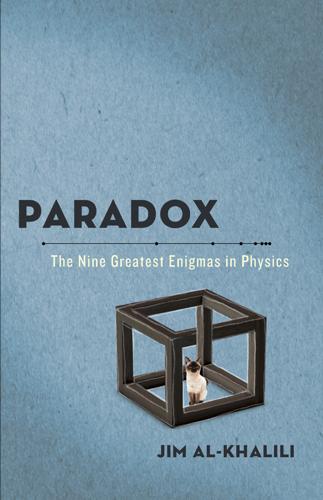
Paradox: The Nine Greatest Enigmas in Physics
by
Jim Al-Khalili
Published 22 Oct 2012
The quote might sound trite and frivolous, but hidden behind it, as was so often the case with the utterances of Bohr, are profound ideas about the nature of fate, free will, and our ability to determine how the future will unfold. Let me first set up the paradox. The French mathematician Pierre-Simon Laplace devised his own imaginary demon half a century before Maxwell proposed his. Laplace’s demon is far more powerful than Maxwell’s since it has the ability to know the exact position and state of motion not merely of every air molecule in a box, but of every particle in the Universe, and fully understands the laws of physics that describe how they interact with each other.
…
It might even turn out that the probabilistic nature of the quantum world does indeed have a direct impact on the world of the very large, particularly inside living cells, and possibly the brain. We may have resolved the Paradox of Laplace’s Demon; but in doing so we have not answered all these questions. 3 Pierre-Simon Laplace, A Philosophical Essay on Probabilities (1814), trans. F. W. Truscott and F. L. Emory, 6th ed. (New York: Dover, 1951), p. 4. 9 THE PARADOX OF SCHRÖDINGERS CAT The cat in the box is both dead and alive—until we look. In 1935 one of the founders of quantum mechanics, the Austrian genius Erwin Schrödinger, had had enough of the weird interpretations of its mathematics.
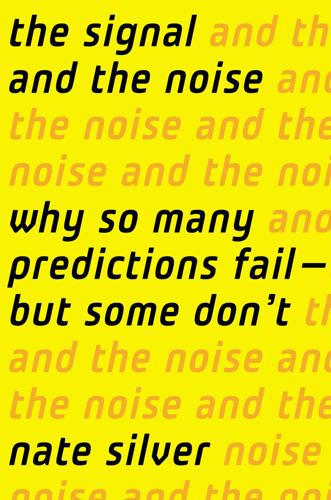
The Signal and the Noise: Why So Many Predictions Fail-But Some Don't
by
Nate Silver
Published 31 Aug 2012
The idea of scientific, technological, and economic progress—which by no means could be taken for granted in the centuries before then—began to emerge, along with the notion that mankind might learn to control its own fate. Predestination was subsumed by a new idea, that of scientific determinism. The idea takes on various forms, but no one took it further than Pierre-Simon Laplace, a French astronomer and mathematician. In 1814, Laplace made the following postulate, which later came to be known as Laplace’s Demon: We may regard the present state of the universe as the effect of its past and the cause of its future. An intellect which at a certain moment would know all forces that set nature in motion, and all positions of all items of which nature is composed, if this intellect were also vast enough to submit these data to analysis, it would embrace in a single formula the movements of the greatest bodies of the universe and those of the tiniest atom; for such an intellect nothing would be uncertain and the future just like the past would be present before its eyes.13 Given perfect knowledge of present conditions (“all positions of all items of which nature is composed”), and perfect knowledge of the laws that govern the universe (“all forces that set nature in motion”), we ought to be able to make perfect predictions (“the future just like the past would be present”).
…
Admitting to our own imperfections is a necessary step on the way to redemption. However, there is nothing intrinsically religious about Bayes’s philosophy.27 Instead, the most common mathematical expression of what is today recognized as Bayes’s theorem was developed by a man who was very likely an atheist,28 the French mathematician and astronomer Pierre-Simon Laplace. Laplace, as you may remember from chapter 4, was the poster boy for scientific determinism. He argued that we could predict the universe perfectly—given, of course, that we knew the position of every particle within it and were quick enough to compute their movement. So why is Laplace involved with a theory based on probabilism instead?
…
A Text-Book on the Weather, the Causes of Its Changes, and Weather Forecasting for the Student and General Reader (New York: Macmillan, 1918). 12. Aristotle, Meteorology, translated by E. W. Webster. Internet Classics Archive. http://classics.mit.edu/Aristotle/meteorology.html. 13. Pierre-Simon Laplace, “A Philosophical Essay on Probabilities” (Cosmo Publications, 2007). 14. The uncertainty principle should not be confused with the observer effect, which is the idea that the act of measuring a system (such as shooting a laser beam at a particle of light) necessarily disrupts it. The two beliefs are not inherently incompatible—but the uncertainty principle is a stronger statement and is not so satisfyingly intuitive.

The Collapse of Western Civilization: A View From the Future
by
Naomi Oreskes
and
Erik M. Conway
Published 30 Jun 2014
Overwhelmingly male, they emphasized study of the world’s physical constituents and processes—the elements and compounds; atomic, magnetic, and gravitational forces; chemical reactions, flows of air and water—to the neglect of biological and social realms and focused on reductionist methodologies that impeded understanding of the crucial interactions between the physical, biological, and social realms. positivism The intellectual philosophy, promoted in the late nineteenth century by the French sociologist Auguste Comte (but also associated with earlier thinkers such as Francis Bacon and Pierre Simon LaPlace and later thinkers such as Ernst Mach and A. J. Ayer), which stressed that reliable knowledge must be grounded in observation. Statements that could not be tested through observation were considered to be outside the realm of “positive knowledge”— or science—and this included most metaphysical and religious claims.
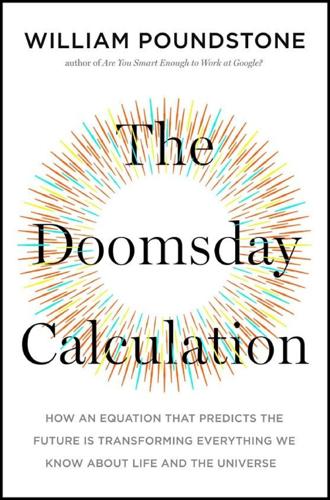
The Doomsday Calculation: How an Equation That Predicts the Future Is Transforming Everything We Know About Life and the Universe
by
William Poundstone
Published 3 Jun 2019
The evidence supplied by drawing a number 7 ball is circumstantial but not to be neglected by any fully reasonable party. “Rational belief is constrained,” Nick Bostrom wrote, “not only by chains of deduction but also by the rubber bands of probabilistic inference.” Doubting Thomas Bayes’s Essay found a most influential reader. He was Pierre-Simon Laplace (1749–1827), a French marquis, mathematician, physicist, astronomer, and atheist. Laplace slapped Bayes’s wreck of a paper into rigorous math. There are those who judge Laplace to be the true originator of Bayesian probability, leaving Bayes as simply a brand. Everyone read Laplace. But Laplace’s enthusiasm for the probability of causes couldn’t change reality.
…
Still, it’s not always clear how to apply Occam’s razor (or SIA). What if a relatively simple theory, well grounded in evidence, predicts an infinity of observers? That’s not a hypothetical question for today’s cosmologists. Tarzan Meets Jane The theory of probability is, in the most profound way, only common sense reduced to calculus.” So wrote Pierre-Simon Laplace in 1814. The historical record paints a murkier picture. Probability theory can be a quagmire with no firm footing. It has entrapped many of the smartest people who ever lived. Gottfried Leibniz was the universal genius who invented calculus, independently of Newton, and who inspired Voltaire’s consummate know-it-all, Dr.
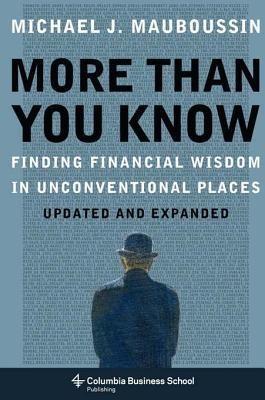
More Than You Know: Finding Financial Wisdom in Unconventional Places (Updated and Expanded)
by
Michael J. Mauboussin
Published 1 Jan 2006
Investors who insist on understanding the causes for the market’s moves risk focusing on faulty causality or inappropriately anchoring on false explanations. Many of the big moves in the market are not easy to explain. Laplace’s Demon Two hundred years ago, determinism ruled in science. Inspired by Newton, scientists largely embraced the notion of a clockwork universe. The French mathematician Pierre Simon Laplace epitomized this thinking with a famous passage from A Philosophical Essay on Probabilities:An intellect which at any given moment knew all of the forces that animate Nature and the mutual positions of the beings that comprise it, if this intellect were vast enough to submit its data to analysis, could condense into a single formula the movement of the greatest bodies of the universe and that of the lightest atom: for such an intellect nothing could be uncertain; and the future just like the past would be present before its eyes.
…
See also psychology of investing investment process investment profession investors: average holding period diversity of evolution of understanding of power laws Iowa Electronic Markets (IEM) janitor’s dream jellybean-jar experiment Johnson, Norman judgment Kahneman, Daniel; decision-making model Kaplan, Sarah Karceski, Jason Kasparov, Garry Kaufman, Peter Keynes, John Maynard Knight, Frank Krugman, Paul kurtosis lack of representation Lakonishok, Joseph Laplace, Pierre Simon Laplace’s demon leader/challenger dynamics LeDoux, Joseph Legg Mason Value Trust Leinweber, David Lev, Baruch Lewis, Michael life cycle: clockspeed of companies of fruit flies of industries liking limited-time offers linear models lions liquidity lollapalooza effects long term, management for strategies for winners strategy as simple rules Long Term Capital Management long-term investment, loss aversion and Lorie, James loss, risk and loss aversion equity-risk premium exhibits myopic portfolio turnover ratio of risk to reward utility lottery players Lowenstein, Roger luck MacGregor, Donald G.

The Interstellar Age: Inside the Forty-Year Voyager Mission
by
Jim Bell
Published 24 Feb 2015
That is, like the hour, minute, and second hands of a clock, those three worlds occasionally line up with one another, and thus their gravitational attractions nudge them each away from what would otherwise be perfectly circular orbits. Each of them, then, is sometimes slightly closer to or slightly farther from Jupiter than usual. The mathematics of the orbital resonance of Io, Europa, and Ganymede had been worked out in detail around 1800 by the French astronomer Pierre-Simon Laplace (indeed, the resonance is named after him). But the implications of the Laplace resonance weren’t fully appreciated until just before the Voyagers arrived at Jupiter. In fact, in a scientific publication intentionally timed to appear in print just three days before Voyager 1’s flyby, a team of three celestial mechanics experts led by Stan Peale of UC Santa Barbara published a prediction in Science magazine that the resonance that was slightly changing the inner Galilean satellites’ distances from Jupiter would result in a gentle squeezing and relaxing of their interiors.
…
When my colleagues on the navigation team at JPL, for example, want to study a possible trajectory for a new space mission, they load their computers with the positions and masses of the sun, all the planets and their fifty or so large moons, and more than a half million asteroids, to make sure that every single possible “perturber” of the spacecraft is taken into consideration in their calculations. When astronomers and mathematicians like Edmond Halley and Pierre-Simon Laplace were working out the theory of motions of comets and asteroids, they were working on what physicists call the three-body problem, for example needing to account for the gravity and motions of the sun, Jupiter, and one of the Galilean satellites; or maybe the sun, Jupiter, and a newly discovered comet.

Human Compatible: Artificial Intelligence and the Problem of Control
by
Stuart Russell
Published 7 Oct 2019
Given a purpose defined by a utility or reward function, the machine aims to produce behavior that maximizes its expected utility or expected sum of rewards, averaged over the possible outcomes weighted by their probabilities. Modern AI is partly a rebooting of McCarthy’s dream, except with utilities and probabilities instead of goals and logic. Pierre-Simon Laplace, the great French mathematician, wrote in 1814, “The theory of probabilities is just common sense reduced to calculus.”57 It was not until the 1980s, however, that a practical formal language and reasoning algorithms were developed for probabilistic knowledge. This was the language of Bayesian networks,C introduced by Judea Pearl.
…
This belief was false because Shakey could get stuck in the doorway or miss the doorway altogether or someone might sneakily remove object A from Shakey’s grasp. Shakey’s plan execution module could detect plan failure and replan accordingly, so Shakey was not, strictly speaking, a purely logical system. 57. An early commentary on the role of probability in human thinking: Pierre-Simon Laplace, Essai philosophique sur les probabilités (Mme. Ve. Courcier, 1814). 58. Bayesian logic described in a fairly nontechnical way: Stuart Russell, “Unifying logic and probability,” Communications of the ACM 58 (2015): 88–97. The paper draws heavily on the PhD thesis research of my former student Brian Milch. 59.
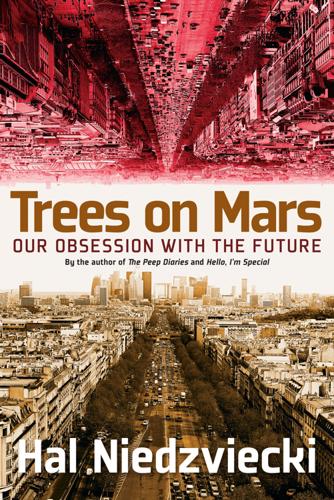
Trees on Mars: Our Obsession With the Future
by
Hal Niedzviecki
Published 15 Mar 2015
She writes with beauty and scope about the information landscape to come: “A new, a vast, and a powerful language is developed . . . in which to wield its truths so that these may become of more speedy and accurate practical application for the purposes of mankind than the means hitherto in our possession have rendered possible.”19 Around the same time, Pierre-Simon Laplace, the great French astronomer and mathematician, an advocate for Newtonian principles, wrote of a new kind of “intelligence” that “would embrace in the same formula the movements of the greatest bodies of the universe and those of the lightest atom; for it, nothing would be uncertain and the future, as the past, would be present to its eyes.”20 Uncertainty banished.
…
Martin Davis, The Universal Computer: The Road from Leibniz to Turing, Turing centenary ed (Boca Raton, Fla: CRC Press, 2012), 16. 16. George Dyson, Turing’s Cathedral: The Origins of the Digital Universe, 1st ed (New York: Pantheon Books, 2012), 104. 17. Ibid., 105. 18. Charles Babbage, Charles Babbage and His Calculating Engines: Selected Writings (Dover Publications, 1961), 247. 19. Ibid., 252. 20. Pierre-Simon Laplace, A Philosophical Essay on Probabilities (Wiley, 1902). 21. Dyson, Turing’s Cathedral, 2012, 130. 22. “The Atlantic Telegraph,” The New York Times, August 6, 1858. 23. Marshall McLuhan, Understanding Media: The Extensions of Man, 1st MIT Press ed (Cambridge, Mass: MIT Press, 1994). 24. John Archibald Wheeler, “It from Bit,” in At Home in the Universe: The Search for Laws of Self-Organization and Complexity, ed.
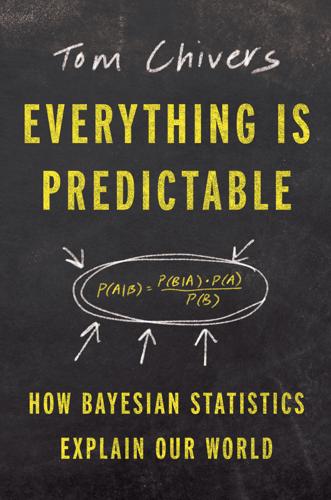
Everything Is Predictable: How Bayesian Statistics Explain Our World
by
Tom Chivers
Published 6 May 2024
(Of course, if the die is fair and we roll it a few hundred times, and if I am a good Bayesian and update my beliefs appropriately in the light of new evidence, we’ll see the six come up about one time in six, and I’ll rapidly adjust my probability to something very close to yours.) “An Essay towards Solving a Problem…” was most likely written in the period after Simpson’s 1755 article. It appears to have sunk almost without trace—it was published after Bayes’s death, but was apparently unknown to Pierre-Simon Laplace, the French mathematician who independently arrived at similar conclusions in 1774. Stigler argues that Bayes himself didn’t think all that much of it—he wrote a will in 1760, four months before he died, suggesting that he knew he might not have long to live, and that he “would have had the opportunity to communicate his work to the Royal Society had he wished to do so,”53 since he was by then a fellow.
…
Bayes had shown that if you take into account a prior estimate of what that true value is most likely to be, you can use those measurements to make inferences—to make statements about what is likely in the world. In the years after Bayes’s death, the great French mathematician and physicist Pierre-Simon Laplace independently arrived at the same conclusions as Bayes, and gave a rather more detailed account of it. Richard Price visited Paris in 1781 and discussed Bayes’ rule with Nicolas de Caritat, Marquis of Condorcet, who was a mentor of Laplace’s. Condorcet, and then Laplace himself, went on to acknowledge that Bayes got there first, hence “Bayes’ theorem” rather than “Laplace’s theorem,”66 even though Laplace’s treatment of the problem was probably the more impressive.
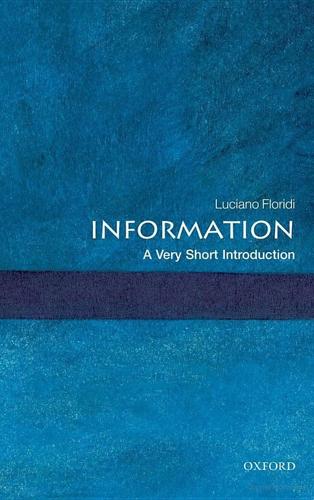
Information: A Very Short Introduction
by
Luciano Floridi
Published 25 Feb 2010
The problem is that, if this were true, the universe would `run out of memory' because, as Philip Ball has remarked: To simulate the Universe in every detail since time began, the computer would have to have 109° bits - binary digits, or devices capable of storing a I or a 0 - and it would have to perform 10120 manipulations of those bits. Unfortunately there are probably only around 1080 elementary particles in the Universe. Moreover, if the world were a computer, this would imply the total predictability of its developments and the resuscitation of another demon, that of Laplace. Pierre-Simon Laplace (1749-1827), one of the founding fathers of mathematical astronomy and statistics, suggested that if a hypothetical being (known as Laplace's demon) could have all the necessary information about the precise location and momentum of every atom in the universe, he could then use Newton's laws to calculate the entire history of the universe.

The Great Mental Models: General Thinking Concepts
by
Shane Parrish
Published 22 Nov 2019
There are three important aspects of probability that we need to explain so you can integrate them into your thinking to get into the ballpark and improve your chances of catching the ball: Bayesian thinking Fat-tailed curves Asymmetries Thomas Bayes and Bayesian thinking: Bayes was an English minister in the first half of the 18th century, whose most famous work, “An Essay Toward Solving a Problem in the Doctrine of Chances”, was brought to the attention of the Royal Society by his friend Richard Price in 1763—two years after his death. The essay concerned how we should adjust probabilities when we encounter new data, and provided the seeds for the great mathematician Pierre Simon Laplace to develop what we now call Bayes’s Theorem. The core of Bayesian thinking (or Bayesian updating, as it can be called) is this: given that we have limited but useful information about the world, and are constantly encountering new information, we should probably take into account what we already know when we learn something new.
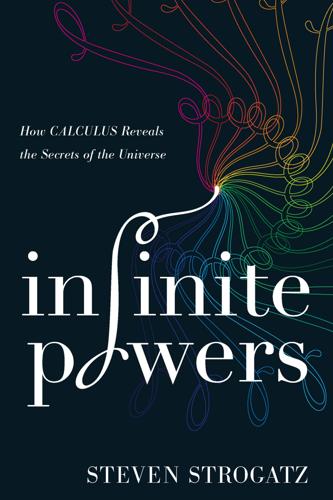
Infinite Powers: How Calculus Reveals the Secrets of the Universe
by
Steven Strogatz
Published 31 Mar 2019
To clarify what I mean by this somewhat apocalyptic warning, we need to understand how prediction is possible at all, what it meant classically, and how our classical notions are being revised by discoveries made in the past several decades in studies of nonlinearity, chaos, and complex systems. Early in the 1800s, the French mathematician and astronomer Pierre Simon Laplace took the determinism of Newton’s clockwork universe to its logical extreme. He imagined a godlike intellect (now known as Laplace’s demon) that could keep track of all the positions of all the atoms in the universe as well as all the forces acting on them. “If this intellect were also vast enough to submit these data to analysis,” he wrote, “nothing would be uncertain and the future just like the past would be present before its eyes.”
…
See also Pohl, “DNA and Differential Geometry.” 275 geometry and topology of DNA: Bates and Maxwell, DNA Topology, and Wasserman and Cozzarelli, “Biochemical Topology.” 275 knot theory and tangle calculus: Ernst and Sumners, “Calculus for Rational Tangles.” 276 targets for cancer-chemotherapy drugs: Liu, “DNA Topoisomerase Poisons.” 277 Pierre Simon Laplace: Kline, Mathematics in Western Culture; C. Hoefer, “Causal Determinism,” https://plato.stanford.edu/entries/determinism-causal/. 277 “nothing would be uncertain”: Laplace, Philosophical Essay on Probabilities, 4. 277 Sofia Kovalevskaya: Cooke, Mathematics of Sonya Kovalevskaya, and Goriely, Applied Mathematics, 54–57.
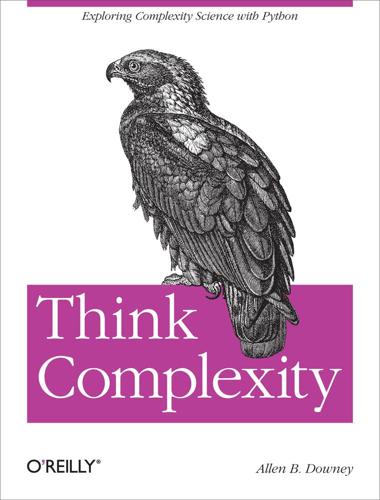
Think Complexity
by
Allen B. Downey
Published 23 Feb 2012
The center of mass of world opinion swings along this range in response to historical developments and scientific discoveries. Prior to the scientific revolution, many people regarded the working of the universe as fundamentally unpredictable or controlled by supernatural forces. After the triumphs of Newtonian mechanics, some optimists came to believe something like D4. For example, in 1814, Pierre-Simon Laplace wrote: We may regard the present state of the universe as the effect of its past and the cause of its future. An intellect which at a certain moment would know all forces that set nature in motion, and all positions of all items of which nature is composed, if this intellect were also vast enough to submit these data to analysis, it would embrace in a single formula the movements of the greatest bodies of the universe and those of the tiniest atom; for such an intellect nothing would be uncertain and the future just like the past would be present before its eyes.

The Book of Why: The New Science of Cause and Effect
by
Judea Pearl
and
Dana Mackenzie
Published 1 Mar 2018
Likewise, only when insurance organizations demanded accurate estimates of life annuity did mathematicians like Edmond Halley (1693) and Abraham de Moivre (1725) begin looking at mortality tables to calculate life expectancies. Similarly, astronomers’ demands for accurate predictions of celestial motion led Jacob Bernoulli, Pierre-Simon Laplace, and Carl Friedrich Gauss to develop a theory of errors to help us extract signals from noise. These methods were all predecessors of today’s statistics. Ironically, the need for a theory of causation began to surface at the same time that statistics came into being. In fact, modern statistics hatched from the causal questions that Galton and Pearson asked about heredity and their ingenious attempts to answer them using cross-generational data.
…
Each time a ball hits a pin, it bounces either to the left or the right, and from a distance its choice seems completely random. The sum of the results—say, the excess of the rights over the lefts—determines which slot the ball ends up in. According to the central limit theorem, proven in 1810 by Pierre-Simon Laplace, any such random process—one that amounts to a sum of a large number of coin flips—will lead to the same probability distribution, called the normal distribution (or bell-shaped curve). The Galton board is simply a visual demonstration of Laplace’s theorem. The central limit theorem is truly a miracle of nineteenth-century mathematics.
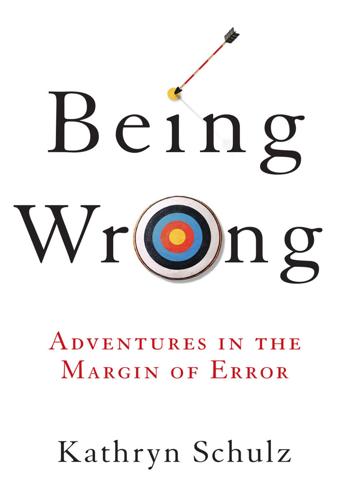
Being Wrong: Adventures in the Margin of Error
by
Kathryn Schulz
Published 7 Jun 2010
This is another important dispute in the history of how we think about being wrong: whether error represents an obstacle in the path toward truth, or the path itself. The former idea is the conventional one. The latter, as we have seen, emerged during the Scientific Revolution and continued to evolve throughout the Enlightenment. But it didn’t really reach its zenith until the early nineteenth century, when the French mathematician and astronomer Pierre-Simon Laplace refined the theory of the distribution of errors, illustrated by the now-familiar bell curve. Also known as the error curve or the normal distribution, the bell curve is a way of aggregating individually meaningless, idiosyncratic, or inaccurate data points in order to generate a meaningful and accurate big picture.
…
Whether or not this method has ever been practiced as such (that is, to what extent scientists, especially as individuals, seek to replicate experiments and falsify hypotheses) is an open question, as Thomas Kuhn made abundantly clear in The Structure of Scientific Revolutions. But my point here concerns the method as an intellectual ideal more than an actual practice. “For Satan himself.” The Bible, New International Version (HarperTorch, 1993), 2 Corinthians 11:14–15. errors as ignes fatui. Bates, 46. Pierre-Simon Laplace. Bates touches on this development toward the end of Enlightenment Aberrations (248), but my primary source here was Steven M. Stigler’s History of Statistics: The Measurement of Uncertainty Before 1900 (Harvard University Press, 1990), especially 31–38 and 109–148. “The genius of statistics.”
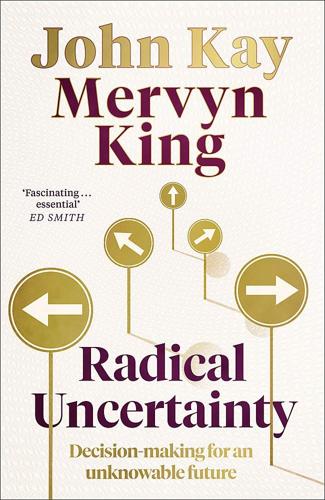
Radical Uncertainty: Decision-Making for an Unknowable Future
by
Mervyn King
and
John Kay
Published 5 Mar 2020
From the earliest days of probabilistic thinking, attempts were made to apply such reasoning outside the domain of the observable frequencies of games of chance and human mortality, to use probabilistic language and mathematics in the description of unique events such as the Yucatán asteroid or the bin Laden raid. And from the earliest days of probabilistic thinking, such extension was resisted. Opponents of extension for long had the upper hand. In his 1843 System of Logic , the British philosopher John Stuart Mill criticised the French mathematician Pierre-Simon Laplace for applying probability theory ‘to things of which we are completely ignorant’. 2 Another French mathematician, Joseph Bertrand, went further. 3 He lambasted his countrymen for making absurd assumptions in the application of probabilities to problems outside the domain of games of chance.
…
Donoghue (1983). 18 Márquez and Stone (1981). 19 Tuckett and Nikolic (2017) p. 502. 20 Ibid. p. 501. 21 Walton and Huey (1993) p. 298. 22 Serling (1992) p. 68. 23 Ibid. p. 285. 24 Kay (2011) pp. 21–2. 25 Shubber (2018). 26 Wolfe (1988) p. 57. 27 Shiller (2017) and Chong and Tuckett (2015). 13. TELLING STORIES THROUGH NUMBERS 1 That distribution was subsequently, and seemingly independently, discovered by another Frenchman, Pierre-Simon Laplace, and by the German Carl Gauss, and is still often called the Gaussian distribution. 2 Quetelet (1835). 3 We owe these discoveries to distinguished professors of applied mathematics in the early twentieth century, scholars such as Francis Galton, Karl Pearson and Jerzy Neyman – and to ‘Student’, who published anonymously.
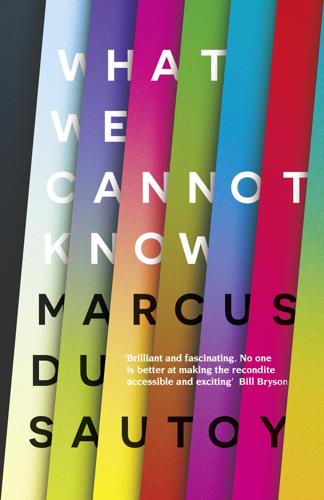
What We Cannot Know: Explorations at the Edge of Knowledge
by
Marcus Du Sautoy
Published 18 May 2016
Euler’s equations could be applied more generally to something like a vibrating string or a swinging pendulum. More and more equations appeared that controlled various natural phenomena. Euler produced equations for non-viscous fluids. At the beginning of the nineteenth century French mathematician Joseph Fourier found equations to describe heat flow. Fellow compatriots Pierre-Simon Laplace and Siméon-Denis Poisson took Newton’s equations to produce more generalized equations for gravitation, which were then seen to control other phenomena like hydrodynamics and electrostatics. The behaviours of viscous fluids were described by the Navier–Stokes equations, and electromagnetism by Maxwell’s equations.
…
With the discovery of the calculus and the laws of motion, it seemed that Newton had turned the universe into a deterministic clockwork machine controlled by mathematical equations. Scientists believed they had indeed discovered the Theory of Everything. In his Philosophical Essay on Probabilities published in 1812, the mathematician Pierre-Simon Laplace summed up most scientists’ belief in the extraordinary power of mathematics to tell you everything about the physical universe. We may regard the present state of the universe as the effect of its past and the cause of its future. An intellect which at a certain moment would know all forces that set nature in motion, and all positions of all items of which nature is composed, if this intellect were also vast enough to submit these data to analysis, it would embrace in a single formula the movements of the greatest bodies of the universe and those of the tiniest atom; for such an intellect nothing would be uncertain and the future just like the past would be present before its eyes.

Growth: From Microorganisms to Megacities
by
Vaclav Smil
Published 23 Sep 2019
The second most common name besides normal is the Gaussian distribution, named after Carl Friedrich Gauss, although Gauss was not the first mathematician to identify its existence (figure 1.22). His first published work on that topic came more than three decades after Pierre-Simon Laplace published his Mémoire sur la probabilité which contains normal curve function (Gauss 1809; Laplace 1774). Laplace’s distribution should have been a more accurate attribution—until Pearson (1924) discovered that the work of de Moivre antedates that of Laplace (figure 1.22). Figure 1.22 Carl Friedrich Gauss, Pierre-Simon Laplace, and Abraham de Moivre. Portraits from the author’s collection. In 1730 Abraham de Moivre published his Miscellanea Analytica and three years later attached a short supplement entitled Approximatio ad Summam Terminorum Binomii (a+b)n in Seriem expansi which contains the first known treatment of what we now know as the normal curve and was included in the second edition of his Doctrine of Chances (de Moivre 1738).
…
Figure 1.20 Logistic growth trajectory (inflection point in 2024, asymptote at 625.5 Wh/kg) of battery energy densities, 1900–2017. Plotted from data in Zu and Li (2011) and from subsequent news reports. Figure 1.21 Examples of confined exponential growth curves (based on Banks 1994). Figure 1.22 Carl Friedrich Gauss, Pierre-Simon Laplace, and Abraham de Moivre. Portraits from the author’s collection. Figure 1.23 Characteristics of the normal distribution curve. Figure 1.24 Lognormal species abundance distributions (x axes in log2 classes) of North American fish and birds and less regular distributions of North American and Asian vegetation.
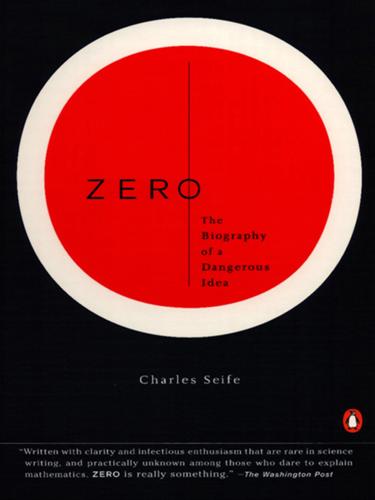
Zero: The Biography of a Dangerous Idea
by
Charles Seife
Published 31 Aug 2000
Zero was on the way, and just as the church was breaking the shackles of Aristotelianism, it arrived. Zero’s Triumph …a profound and important idea which appears so simple to us now that we ignore its true merit. But its very simplicity and the great ease which it lent to all computations put our arithmetic in the first rank of useful inventions. —PIERRE-SIMON LAPLACE Christianity initially rejected zero, but trade would soon demand it. The man who reintroduced zero to the West was Leonardo of Pisa. The son of an Italian trader, he traveled to northern Africa. There the young man—better known as Fibonacci—learned mathematics from the Muslims and soon became a good mathematician in his own right.
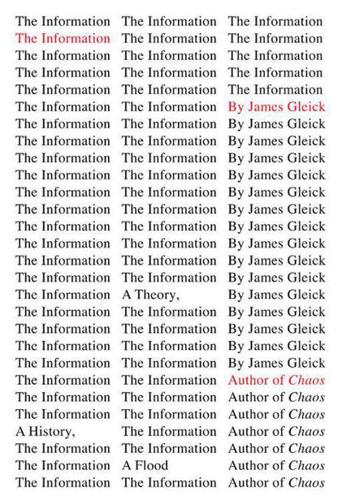
The Information: A History, a Theory, a Flood
by
James Gleick
Published 1 Mar 2011
Is not every word an impulse on the air?” Further, every impulse vibrates outward indefinitely, “upward and onward in their influences upon all particles of all matter,” until it must, “in the end, impress every individual thing that exists within the universe.” Poe was also reading Newton’s champion Pierre-Simon Laplace. “A being of infinite understanding,” wrote Poe, “—one to whom the perfection of the algebraic analysis lay unfolded” could trace the undulations backward to their source. Babbage and Poe took an information-theoretic view of the new physics. Laplace had expounded a perfect Newtonian mechanical determinism; he went further than Newton himself, arguing for a clockwork universe in which nothing is left to chance.
…
♦ “WHAT A STRANGE CHAOS”: Charles Babbage, The Ninth Bridgewater Treatise: A Fragment, 2nd ed. (London: John Murray, 1838), 111. ♦ “NO THOUGHT CAN PERISH”: Edgar Allan Poe, “The Power of Words” (1845), in Poetry and Tales (New York: Library of America, 1984), 823–24. ♦ “IT WOULD EMBRACE IN THE SAME FORMULA”: Pierre-Simon Laplace, A Philosophical Essay on Probabilities, trans. Frederick Wilson Truscott and Frederick Lincoln Emory (New York: Dover, 1951). ♦ “IN TURNING OUR VIEWS”: Charles Babbage, The Ninth Bridgewater Treatise, 44. ♦ “THE ART OF PHOTOGENIC DRAWING”: Nathaniel Parker Willis, “The Pencil of Nature: A New Discovery,” The Corsair 1, no. 5 (April 1839): 72
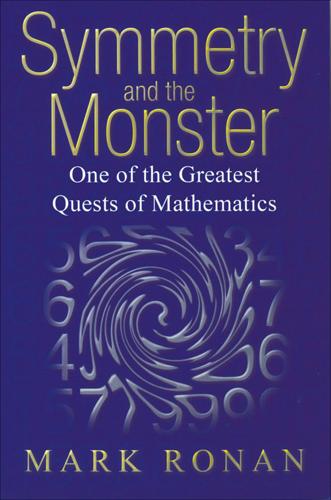
Symmetry and the Monster
by
Ronan, Mark
Published 14 Sep 2006
Mark Ronan, February 2006 Contents Prologue 1 Theaetetus’s Icosahedron 2 Galois: Death of a Genius 3 Irrational Solutions 4 Groups 5 Sophus Lie 6 Lie Groups and Physics 7 Going Finite 8 After the War 9 The Man from Uccle 10 The Big Theorem 11 Pandora’s Box 12 The Leech Lattice 13 Fischer’s Monsters 14 The Atlas 15 A Monstrous Mystery 16 Construction 17 Moonshine Notes Appendix 1: The Golden Section Appendix 2: The Witt Design Appendix 3: The Leech Lattice Appendix 4: The 26 Exceptions Glossary Index To Grace Varndell, my headmistress from primary school, who still remembers exactly where I sat in class. Prologue What we know is not much. What we do not know is immense. Pierre-Simon Laplace (1749–1827), said to be his last words In November 1978 an English mathematician named John McKay was reading a research paper at his home in Montreal. He worked in a branch of mathematics called group theory, which deals with the study of symmetry. It was an area that had recently produced some exceptional objects in many dimensions, but McKay was taking a break by reading a paper in number theory, the part of mathematics that deals with the whole numbers.
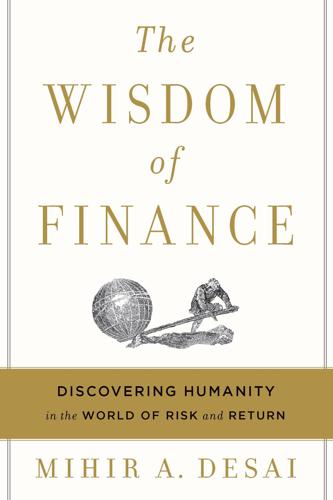
The Wisdom of Finance: Discovering Humanity in the World of Risk and Return
by
Mihir Desai
Published 22 May 2017
But the quincunx, like many outcomes that are the product of multiple random processes, actually results in the wonderfully soothing bell-shaped distribution where most balls fall in the center. This regularity was found so often and in so many intriguing places that it gave rise to a conviction that what seemed like chance was illusory and that nature followed ironclad laws. Pierre-Simon Laplace, a pioneer of statistics and probability during this period, was characteristic of the ironic confusion: the discoverers of the tools to analyze randomness came to believe in determinism. Laplace began a famous volume on probability by asserting that “all events, even those which on account of their insignificance do not seem to follow the great laws of nature, are a result of it just as necessarily as the revolutions of the sun.”
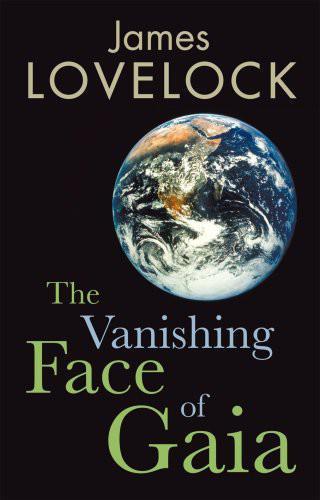
The Vanishing Face of Gaia: A Final Warning
by
James E. Lovelock
Published 1 Jan 2009
Scientists of these separated disciplines should have realized that they were on the wrong track when quite independently the geophysicist Edward Lorenz, in 1961, and the neo‐Darwinist biologist Robert May, in 1973, made the remarkable discovery that deterministic chaos was an inherent part of the computer models they researched. Deterministic chaos is not an oxymoron, however much it may seem like one. Up until Lorenz and May started using computers to solve systems rich in difficult equations almost all science clung to the comforting idea put forward in 1814 by the French mathematician Pierre‐Simon Laplace that the universe was deterministic and if the precise location and momentum of every particle in the universe were known, then by using Newton’s laws we could reveal the entire course of cosmic events, past, present and future. The first indication that this was too good to be true came in 1890 when Henri Poincaré studied the interaction of three bodies held together by gravity while orbiting in space; he found that the behaviour of the system was wholly unpredictable.

The Logician and the Engineer: How George Boole and Claude Shannon Created the Information Age
by
Paul J. Nahin
Published 27 Oct 2012
What Boole did was not really original, as conditional probability had been studied a century before by the English philosopher and minister Thomas Bayes (1701–1761), whose work was published posthumously in 1764 in the Philosophical Transactions of the Royal Society of London, where it was then promptly forgotten for twenty years until the great French mathematician Pierre-Simon Laplace (1749–1827) endorsed Bayes’s results. What Boole did, then, with the following analysis, was remind his readers what the Reverend Bayes had done a hundred years before. From the previous section—see (6.2.6) and (6.2.7)—we have But and so and so Or, from (6.2.8), we rewrite the denominator of (6.3.1) to get or, at last, we arrive at Boole’s result (in our modern notation): which is (most definitely!)
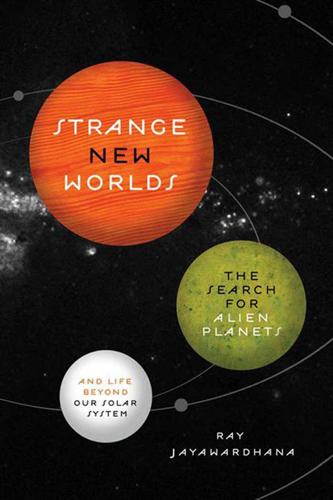
Strange New Worlds: The Search for Alien Planets and Life Beyond Our Solar System
by
Ray Jayawardhana
Published 3 Feb 2011
Unfortunately, soon after his book was printed, Kant’s publisher went bankrupt, and not even King Frederick the Great, to whom it was dedicated, got to see Kant’s ambitiously titled book Universal Natural History and Theory of the Heavens: An Essay on the Constitution and Mechanical Origin of the Whole Universe according to Newton’s Principles. Forty years later, the French mathematician Pierre Simon Laplace came up with a somewhat different version of the “solar nebula” model. He suggested that a fast-spinning young Sun cast off rings of material, out of which the planets condensed. Again, the implication is that the same could happen with other stars. Laplace’s scenario accounted for the planets orbiting the Sun in the same plane and the same direction.
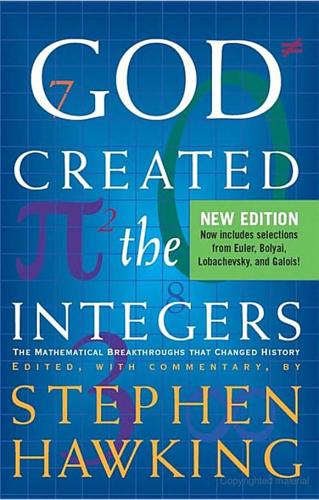
God Created the Integers: The Mathematical Breakthroughs That Changed History
by
Stephen Hawking
Published 28 Mar 2007
Selections from Isaac Newton’s Principia, notes by David Eugene Smith, courtesy of New York: Daniel Adee, © 1848. English translation of Leonhard Euler’s On the sums of series of reciprocals (De summis serierum reciprocarum) courtesy of Jordan Bell. Leonhard Euler’s The Seven Bridges of Konigsberg and Proof that Every Integer is A Sum of Four Squares courtesy of Dover Publications. Pierre Simon Laplace’s A Philosophical Essay on Probabilities, introductory note by E.T. Bell, courtesy of Dover Publications. Selection from Jean Baptiste Joseph Fourier’s The Analytical Theory of Heat courtesy of Dover Publications. Selections from Carl Friedrich Gauss’s Disquisitiones Arithmeticae courtesy of Yale University Press.
…
CONTENTS Introduction EUCLID (C. 325BC–265BC) His Life and Work Selections from Euclid’s Elements Book I: Basic Geometry—Definitions, Postulates, Common Notions; and Proposition 47, (leading up to the Pythagorean Theorem) Book V: The Eudoxian Theory of Proportion—Definitions & Propositions Book VII: Elementary Number Theory—Definitions & Propositions Book IX: Proposition 20: The Infinitude of Prime Numbers Book IX: Proposition 36: Even Perfect Numbers Book X: Commensurable and Incommensurable Magnitudes ARCHIMEDES (287BC–212BC) His Life and Work Selections from The Works of Archimedes On the Sphere and Cylinder, Books I and II Measurement of a Circle The Sand Reckoner The Methods DIOPHANTUS (C. 200–284) His Life and Work Selections from Diophantus of Alexandria, A Study in the History of Greek Algebra Book II Problems 8–35 Book III Problems 5–21 Book V Problems 1–29 RENÉ DESCARTES (1596–1650) His Life and Work The Geometry of Rene Descartes ISAAC NEWTON (1642–1727) His Life and Work Selections from Principia On First and Last Ratios of Quantities LEONHARD EULER (1707–1783) His Life and Work On the sums of series of reciprocals (De summis serierum reciprocarum) The Seven Bridges of Konigsberg Proof that Every Integer is A Sum of Four Squares PIERRE SIMON LAPLACE (1749–1827) His Life and Work A Philosophical Essay on Probabilities JEAN BAPTISTE JOSEPH FOURIER (1768–1830) His Life and Work Selection from The Analytical Theory of Heat Chapter III: Propagation of Heat in an Infinite Rectangular Solid (The Fourier series) CARL FRIEDRICH GAUSS (1777–1855) His Life and Work Selections from Disquisitiones Arithmeticae (Arithmetic Disquisitions) Section III Residues of Powers Section IV Congruences of the Second Degree AUGUSTIN-LOUIS CAUCHY (1789–1857) His Life and Work Selections from Oeuvres complètes d’Augustin Cauchy Résumé des leçons données à l’École Royale Polytechnique sur le calcul infinitésimal (1823), series 2, vol. 4 Lessons 3–4 on differential calculus Lessons 21–24 on the integral NIKOLAI IVANOVICH LOBACHEVSKY (1792–1856) His Life and Work Geometrical Researches on the Theory of Parallels JÁNOS BOLYAI (1802–1860) His Life and Work The Science of Absolute Space ÉVARISTE GALOIS (1811–1832) His Life and Work On the conditions that an equation be soluble by radicals Of the primitive equations which are soluble by radicals On Groups and Equations and Abelian Integrals GEORGE BOOLE (1815–1864) His Life and Work An Investigation of the Laws of Thought BERNHARD RIEMANN (1826–1866) His Life and Work On the Representability of a Function by Means of a Trigonometric Series (Ueber die Darstellbarkeit eine Function durch einer trigonometrische Reihe) On the Hypotheses which lie at the Bases of Geometry (Ueber die Hypothesen, welche der Geometrie zu Grunde liegen) On the Number of Prime Numbers Less than a Given Quantity (Ueber die Anzahl der Primzahlen unter einer gegebenen Grösse) KARL WEIERSTRASS (1815–1897) His Life and Work Selected Chapters on the Theory of Functions, Lecture Given in Berlin in 1886, with the Inaugural Academic Speech, Berlin 1857 § 7 Gleichmässige Stetigkeit (Uniform Continuity) RICHARD DEDEKIND (1831–1916) His Life and Work Essays on the Theory of Numbers GEORG CANTOR (1848–1918) His Life and Work Selections from Contributions to the Founding of the Theory of Transfinite Numbers Articles I and II HENRI LEBESGUE (1875–1941) His Life and Work Selections from Integrale, Longeur, Aire (Intergral, Length, Area) Preliminaries and Integral KURT GÖDEL (1906–1978) His Life and Work On Formally Undecidable Propositions of Principia Mathematica and Related Systems ALAN TURING (1912–1954) His Life and Work On computable numbers with an application to the Entscheidungsproblem, Proceedings of the London Mathematical Society INTRODUCTION WE ARE LUCKY TO LIVE IN AN AGE LN WHICH WE ARE STILL MAKING DISCOVERIES.
…
It is hard to imagine the development of either electrodynamics or quantum theory without the methods of Jean Baptiste Joseph Fourier or the work on calculus and the theory of complex functions pioneered by Carl Friedrich Gauss and Augustin-Louis Cauchy—and it was Henri Lebesgue’s work on the theory of measure that enabled John von Neumann to formulate the rigorous understanding of quantum theory that we have today. Albert Einstein could not have completed his general theory of relativity had it not been for the geometric ideas of Bernhard Riemann. And practically all of modern science would be far less potent (if it existed at all) without the concepts of probability and statistics pioneered by Pierre Simon Laplace. All through the ages, no intellectual endeavor has been more important to those studying physical science than has the field of mathematics. But mathematics is more than a tool and language for science. It is also an end in itself, and as such, it has, over the centuries, affected our worldview in its own right.
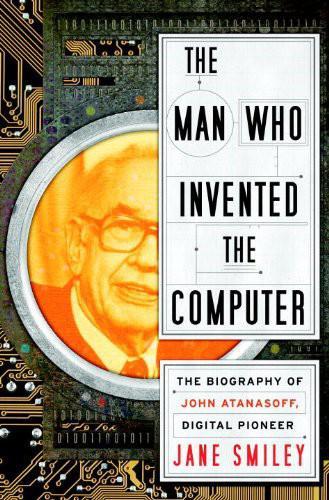
The Man Who Invented the Computer
by
Jane Smiley
Published 18 Oct 2010
One of these students came up with an idea for a type of small analog calculator, something like a slide rule, that measured fourteen inches by three inches by three inches. Atanasoff, the student, and another colleague designed it to calculate the geometry of surfaces and called it a “Laplaciometer,” after the eighteenth-century French mathematician and astronomer Pierre-Simon Laplace, but its uses were limited. Most calculators in the 1930s were analog, that is, they were similar to a slide rule in that something is measured in order to ascertain a number. As Atanasoff later explained to Clark Mollenhoff, his first biographer, the thing measured “can be anything: a distance, an electric voltage, a current of electricity, air pressure, etc.”
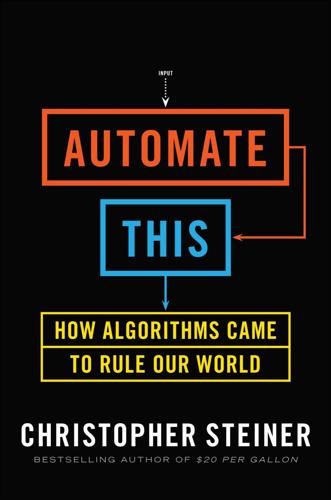
Automate This: How Algorithms Came to Rule Our World
by
Christopher Steiner
Published 29 Aug 2012
GIVING VISUAL SHAPE TO ALGORITHMS In 1791, the famous Austrian composer Joseph Haydn attended a grandly staged version of George Frideric Handel’s Messiah at Westminster Abbey in London. At the close of the performance, put on by a thousand choral and orchestra members, Haydn wept. Through his tears, he declared of Handel, his contemporary, “He is the master of us all.”37 At about the same time, Pierre-Simon Laplace, the French mathematician and one of the thought giants who developed the field of statistics, was exclaiming the same thing, but not of the Messiah’s composer. The man Laplace proclaimed the “master of us all” was Leonhard Euler.38 Euler was another product of the University of Basel, a world-altering cluster of intelligence.

The Perfect Bet: How Science and Math Are Taking the Luck Out of Gambling
by
Adam Kucharski
Published 23 Feb 2016
It gives us the ability to judge the likelihood of events and assess the reliability of information. As a result, it is a vital component of modern scientific research, from DNA sequencing to particle physics. Yet the science of probability emerged not in libraries or lecture theaters but among the cards and dice of bars and game rooms. For eighteenth-century mathematician Pierre Simon Laplace, it was a strange contrast. “It is remarkable that a science which began with the consideration of games of chance should have become the most important object of human knowledge.” Cards and casinos since have inspired many other scientific ideas. We have seen how roulette helped Henri Poincaré develop the early ideas of chaos theory and allowed Karl Pearson to test his new statistical techniques.
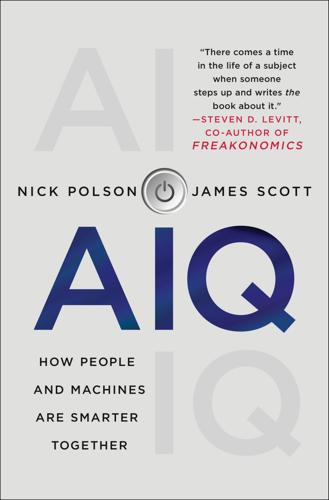
AIQ: How People and Machines Are Smarter Together
by
Nick Polson
and
James Scott
Published 14 May 2018
Bayes didn’t even publish it during his lifetime; he died in 1761, and his manuscript was read posthumously to the Royal Society in 1763, by his friend Richard Price. There was a brief period around the turn of the nineteenth century when Bayesian ideas flourished, mainly in the hands of the great French mathematician Pierre-Simon Laplace. But upon Laplace’s death in 1827, Bayes’s rule fell into obscurity and irrelevance for more than a century. Bayesian Updating and Robot Cars Today, however, Bayes’s rule is back, better than ever, and sitting right behind the steering wheel of every robot car out there. Bayes’s rule is an equation that tells us how to update our beliefs in light of new information, turning prior probabilities into posterior probabilities.

Know Thyself
by
Stephen M Fleming
Published 27 Apr 2021
Green and Swets (1966). 3. The seeds of Bayes’s rule were first identified by the eleventh-century Arabic mathematician Ibn al-Haytham, developed by English clergyman and mathematician Thomas Bayes in 1763, and applied to a range of scientific problems by the eighteenth-century French mathematician Pierre-Simon Laplace. See McGrayne (2012). 4. Felleman and Van Essen (1991); Zeki and Bartels (1998). 5. Clark (2013); Clark (2016); Craik (1963); Friston (2010); Helmholtz (1856); Gregory (1970); Hohwy (2013). 6. Kersten, Mamassian, and Yuille (2004); Ernst and Banks (2002); Pick, Warren, and Hay (1969); Bertelson (1999); McGurk and MacDonald (1976). 7.
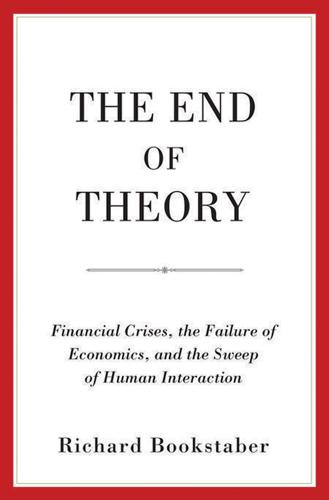
The End of Theory: Financial Crises, the Failure of Economics, and the Sweep of Human Interaction
by
Richard Bookstaber
Published 1 May 2017
HEISENBERG’S UNCERTAINTY PRINCIPLE Just four years before Gödel defined the limits of our ability to conquer the intellectual world of mathematics and logic with the publication of his undecidability theorem, the German physicist Werner Heisenberg’s celebrated uncertainty principle delineated the limits of inquiry into the physical world, thereby undoing the efforts of another celebrated intellect, the great mathematician Pierre-Simon Laplace. In the early 1800s, Laplace had worked extensively to demonstrate the purely mechanical and predictable nature of planetary motion. He later extended this theory to the interaction of molecules. In the Laplacian view, molecules are just as subject to the laws of physical mechanics as the planets are.

The Simulation Hypothesis
by
Rizwan Virk
Published 31 Mar 2019
In the classical view of physics, the universe operates independently of people like us (or observers) and does so in a purely mechanistic way. Newton’s laws of motion could be used to describe the movements of heavenly bodies simply based on their mass and position using basic physics equations. In fact, utilizing Newton’s equations, Pierre-Simon Laplace put together two tomes that described the motions of every heavenly body that was known at the time, Exposition du système du monde and the Mécanique celeste. In this model, each of the planetary bodies is an independent physical entity that acts on the others per the laws of classical mechanics.
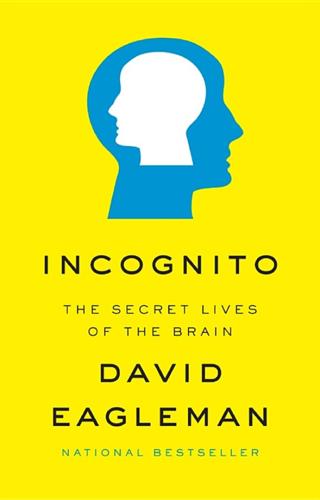
Incognito: The Secret Lives of the Brain
by
David Eagleman
Published 29 May 2011
Over recent centuries, thinking men and women watched the growth of deterministic science around them in the form of the deterministic equations of Galileo, Newton, and others. These scientists pulled springs and rolled balls and dropped weights, and increasingly they were able to predict what the objects would do with simple equations. By the nineteenth century, Pierre-Simon Laplace had proposed that if one could know the position of every particle in the universe, then one could compute forward to know the entire future (and crank the equations in the other direction to know everything past). This historical success story is the heart of reductionism, which essentially proposes that everything big can be understood by discerning smaller and smaller pieces of it.
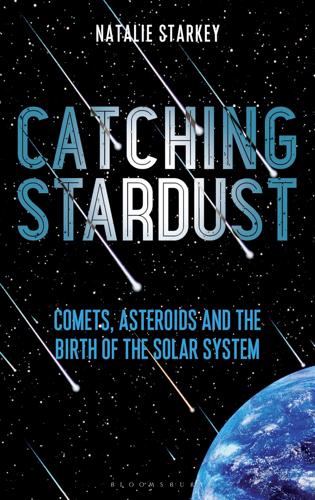
Catching Stardust: Comets, Asteroids and the Birth of the Solar System
by
Natalie Starkey
Published 8 Mar 2018
This is why molecular clouds are sometimes called ‘stellar nurseries’, because they have the potential to give birth to a whole crèche of baby stars. The early forms of the nebular hypothesis were developed around the same time during the eighteenth century by the German and French scholars Immanuel Kant and Pierre-Simon Laplace respectively. Kant and Laplace proposed slightly differing ideas, both theories following on from earlier concepts put forward by the Swedish scientist Emanuel Swedenborg, who suggested that the Solar System was formed from a nebula. Kant argued in his Universal Natural History and Theory of the Heavens (1755) that rotating gaseous clouds gradually collapse and flatten to produce stars and planets.
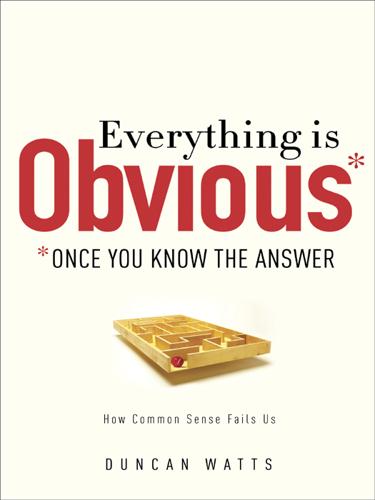
Everything Is Obvious: *Once You Know the Answer
by
Duncan J. Watts
Published 28 Mar 2011
For many things lead me to have a suspicion that all phenomena may depend on certain forces by which particles of bodies, by causes not yet known, either are impelled toward one another and cohere in regular figures, or are repelled from one another and recede.6 A century later, the French mathematician and astronomer Pierre-Simon Laplace pushed Newton’s vision to its logical extreme, claiming in effect that Newtonian mechanics had reduced the prediction of the future—even the future of the universe—to a matter of mere computation. Laplace envisioned an “intellect” that knew all the forces that “set nature in motion, and all positions of all items of which nature is composed.”
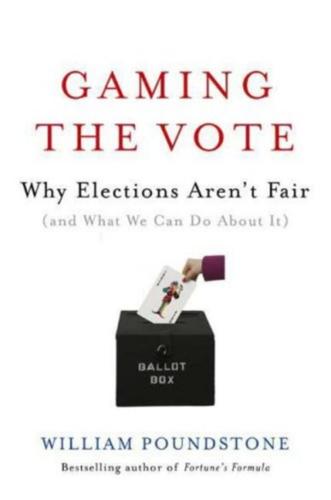
Gaming the Vote: Why Elections Aren't Fair (And What We Can Do About It)
by
William Poundstone
Published 5 Feb 2008
A share of his fame rests with his role in devising the metric system. Borda was chairman of the Commission of Weights and Measures, which included many of the great scientists of the age, among them Condorcet, the chemist Antoine Lavoisier, and the mathematician 136 Trouble in Kiribati Pierre Simon Laplace. The illustrious group considered defining the fundamental unit, the meter, as the length of a pendulum that would complete precisely one swing per second. Accurate clocks could be carried to any corner of the globe, and a simple experiment with string and a plumb bob could determine the accurate length.

The Clockwork Universe: Saac Newto, Royal Society, and the Birth of the Modern WorldI
by
Edward Dolnick
Published 8 Feb 2011
Newton would have wept with rage to know that his scientific descendants spent their lifetimes proving conclusively that the clockwork universe ran even more smoothly than he had ever believed. It ran so marvelously well, in fact, that a new consensus quickly arose—just as Newton’s enemies had claimed, Newton had built a universe that had no place within it for God. The crowning glory of eighteenth-century astronomy was the proof, by the French mathematician Pierre Simon Laplace, that although the planets did wobble a bit as they circled the sun, those wobbles stayed within a narrow, predictable range. Since the wobbles did not grow larger and larger as time passed, as Newton had believed, they did not require that God step in to smooth things out. Laplace presented his masterpiece, a tome called Celestial Mechanics, to Napoleon.

The Sirens of Mars: Searching for Life on Another World
by
Sarah Stewart Johnson
Published 6 Jul 2020
It fit perfectly with his interpretation of planetary formation and the idea that planets would march toward an evolutionarily advanced state—both physically and biologically. As an undergraduate at Harvard, Lowell had completed a thesis on the nebular hypothesis. The theory, first suggested on a somewhat intuitive basis by the philosopher Immanuel Kant during a foray into astronomy, and later by the celebrated French mathematical astronomer Pierre-Simon Laplace, held that rings of gas shed by the cooling, contracting sun condensed to form planets. Since entropy—the tendency toward disorder—was unidirectional, it would eventually lead to the senescence of the solar system, with the smaller planets dying first. So, from the time of their birth as molten masses, Lowell reasoned, the planets progressed through stages of development.

Interplanetary Robots
by
Rod Pyle
He noted that the planet was “surrounded by a thin, flat, ring, nowhere touching, inclined to the ecliptic.”7 Twenty years later, Giovanni Cassini saw the ring divisions (one of which is named after him, the Cassini Division) and realized that the rings were separate structures in a flat plane around the distant world. Over the next two hundred years, scientists like Pierre-Simon Laplace and James Clerk Maxwell intuited that the rings must be made of particles—they could not be solids or liquids as others had theorized; mathematical calculations showed that such structures would not be stable in orbits around a large planet. As the decades sped by, other astronomers used ever-larger instruments to study Saturn's rings, but the real cornucopia of data prior to the Cassini mission came from the Pioneer and Voyager spacecraft as they sped past the planet, with Voyager 2 passing at about 23,000 miles.8 Only then did the real structure and composition of the rings become entrenched in the science books.
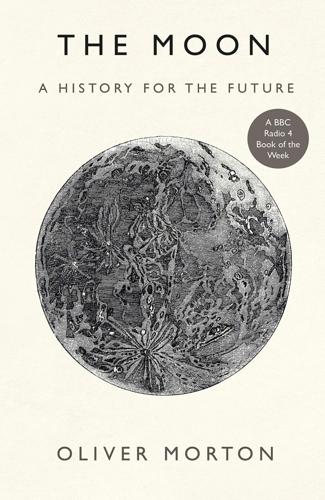
The Moon: A History for the Future
by
Oliver Morton
Published 1 May 2019
The now changeless Moon had previously undergone “a constant progression from one stage of development to the next . . . a perpetual mutation of form and nature”; it had evolved. And an understanding of that evolution could explain the history of other planets, most importantly the Earth, in new ways. The book follows the account of the solar system’s origin given by the great French astronomer Pierre-Simon Laplace: a nebula of dust and gas collapsed in on itself because of Newtonian gravitation. As it did so, an enormous amount of potential energy was given up, and the first law of thermodynamics stated that that energy could not just vanish. Instead, it went into heat. As one of the first law’s framers, Julius von Mayer, had put it, the nebula’s collapse was a source of heat “powerful enough to melt worlds”.
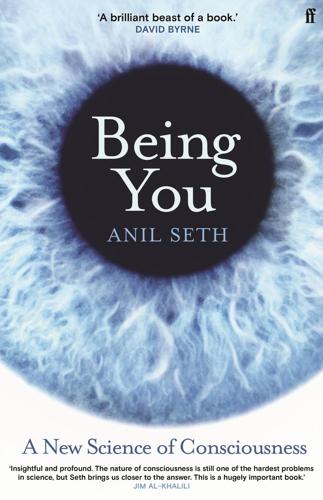
Being You: A New Science of Consciousness
by
Anil Seth
Published 29 Aug 2021
Used with permission of the authors and under a Creative Commons Attribution 4.0 International License, with thanks to Christoph Teufel. 5 The Wizard of Odds The Reverend Thomas Bayes (1702–1761) – a Presbyterian minister, philosopher, and statistician, who lived much of his life in Tunbridge Wells, in southern England – never got around to publishing the theorem that immortalised his name. His ‘Essay towards Solving a Problem in the Doctrine of Chances’ was presented to the Royal Society in London two years after his death by fellow preacher-philosopher Richard Price, and much of the mathematical heavy lifting was done later on by the French mathematician Pierre-Simon Laplace. But it is Bayes whose name is forever tied to a way of reasoning called ‘inference to the best explanation’, the insights from which are central to understanding how conscious perceptions are built from brain-based best guesses. Bayesian reasoning is all about reasoning with probabilities.
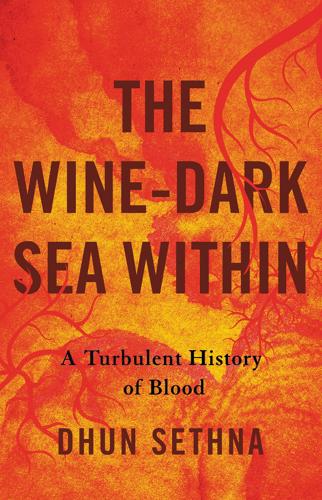
The Wine-Dark Sea Within: A Turbulent History of Blood
by
Dhun Sethna
Published 6 Jun 2022
It could be reconverted into ordinary atmospheric air by simply adding oxygine. Augmenting or diminishing the quantity of oxygine in any atmosphere augmented or diminished the extent of time that an animal could survive in it. From observations conducted and published in collaboration with the great mathematician Pierre-Simon Laplace, the Newton of France, Lavoisier concluded that respiration was a slow form of combustion like the combustion of carbon (charcoal), analogous to that operating in an oil lamp or a lighted candle. From that point of view, all creatures that breathed were combustible substances, burning and consuming themselves!

The Road to Ruin: The Global Elites' Secret Plan for the Next Financial Crisis
by
James Rickards
Published 15 Nov 2016
The third tool in addition to behavioral psychology and complexity theory is Bayesian statistics, a branch of etiology also referred to as causal inference. Both terms derive from Bayes’ theorem, an equation first described by Thomas Bayes and published posthumously in 1763. A version of the theorem was elaborated independently and more formally by the French mathematician Pierre-Simon Laplace in 1774. Laplace continued work on the theorem in subsequent decades. Twentieth-century statisticians have developed more rigorous forms. Normal science including economics assembles massive data sets and uses deductive methods to derive testable hypotheses from the data. These hypotheses often involve correlations and regressions used to forecast future events deemed likely to resemble past events.

This Will Make You Smarter: 150 New Scientific Concepts to Improve Your Thinking
by
John Brockman
Published 14 Feb 2012
But it wasn’t until our understanding of physics was advanced by thinkers such as Avicenna, Galileo, and Newton that it became reasonable to conceive of the universe evolving under its own power, free of guidance and support from anything beyond itself. Theologians sometimes invoke “sustaining the world” as a function of God. But we know better; the world doesn’t need to be sustained, it can simply be. Pierre-Simon Laplace articulated the very specific kind of rule that the world obeys: If we specify the complete state of the universe (or any isolated part of it) at some particular instant, the laws of physics tell us what its state will be at the very next moment. Applying those laws again, we can figure out what it will be a moment later.
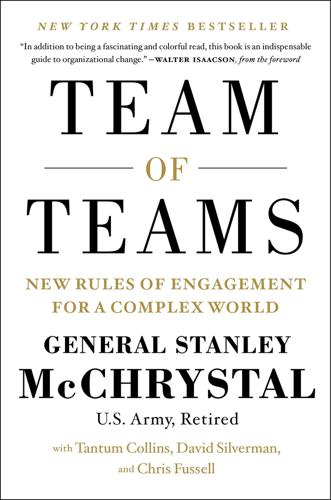
Team of Teams: New Rules of Engagement for a Complex World
by
General Stanley McChrystal
,
Tantum Collins
,
David Silverman
and
Chris Fussell
Published 11 May 2015
By 1890, Midvale had become an industry leader and Taylor departed to pursue the broader potential of “a workplace ruled by science.” Taylor’s efforts dovetailed nicely with contemporary scientific thought, heavily influenced by the elegant simplicity of earlier thinkers such as Newton and “the French Newton,” Pierre-Simon Laplace. Science at the time was dominated by the notion of determinism—the idea that any initial conditions has only one, inevitable outcome: a ball thrown at a certain speed will have a predictable trajectory, as will a planet in orbit. Throughout the nineteenth century, phenomena that had once been written off as the work of God fell under human mastery.
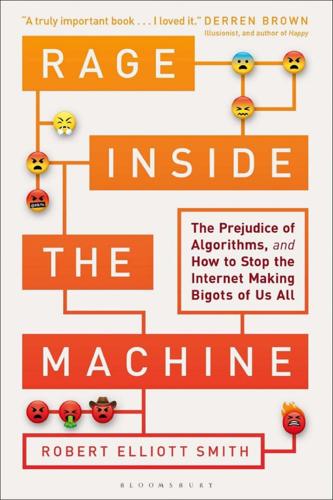
Rage Inside the Machine: The Prejudice of Algorithms, and How to Stop the Internet Making Bigots of Us All
by
Robert Elliott Smith
Published 26 Jun 2019
Gauss’s theory was so seductively simple it appeared to offer an almost magical way to predict previously unknowable things with startling accuracy. Perhaps it could be used to illuminate truths in other complex physical, social and economic phenomena in the increasingly complex industrial world of the late eighteenth century? It was Pierre-Simon Laplace (1749–1827) who, in 1785, found a way to broaden the application of the Bell Curve with the publication of his Central Limit Theorem (CLT). This theory establishes that measurements of all sorts of phenomena tend to be distributed according to a Bell Curve, even if the variations of the thing being measured aren’t distributed by a Bell Curve.
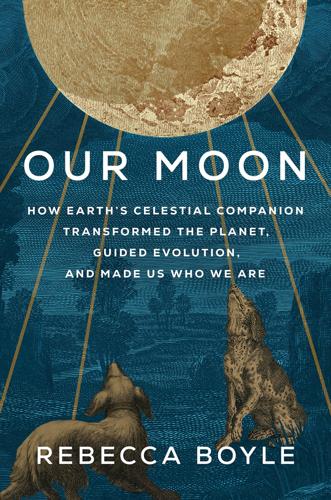
Our Moon: How Earth's Celestial Companion Transformed the Planet, Guided Evolution, and Made Us Who We Are
by
Rebecca Boyle
Published 16 Jan 2024
A year after his Moon essay, Kant advanced a new theory of how not just the Moon, but the entire solar system came to be, titled Universal Natural History and Theory of the Heavens, or an Essay on the Constitution and Mechanical Origin of the Whole Universe, Treated According to Newton’s Principles. The philosopher wrote at roughly the same time as Pierre-Simon Laplace in France and William Herschel in England, and all three posed slightly different variations on the same theme. But Kant’s version of our collective origin story is the closest to the truth. He argued that the primitive chaos divided itself into isolated masses—like fresh and salty water, like Apsu and Tiamat.
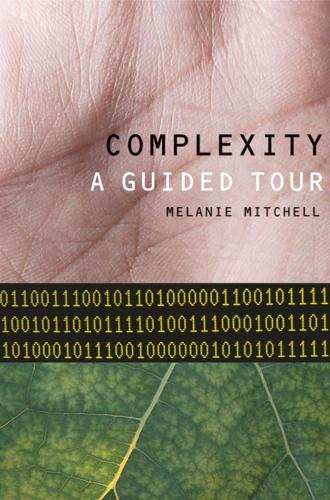
Complexity: A Guided Tour
by
Melanie Mitchell
Published 31 Mar 2009
As he wrote: “nature is exceedingly simple and conformable to herself. Whatever reasoning holds for greater motions, should hold for lesser ones as well.” Newtonian mechanics produced a picture of a “clockwork universe,” one that is wound up with the three laws and then runs its mechanical course. The mathematician Pierre Simon Laplace saw the implication of this clockwork view for prediction: in 1814 he asserted that, given Newton’s laws and the current position and velocity of every particle in the universe, it was possible, in principle, to predict everything for all time. With the invention of electronic computers in the 1940s, the “in principle” might have seemed closer to “in practice.”

A Demon of Our Own Design: Markets, Hedge Funds, and the Perils of Financial Innovation
by
Richard Bookstaber
Published 5 Apr 2007
Just four years before Godel had defined the limits of our ability to conquer the intellectual world of mathematics and logic with the publication of his Undecidability Theorem, the German physicist Werner Heisenberg’s celebrated Uncertainty Principle had delineated the limits of inquiry into the physical world, thereby undoing the efforts of another celebrated intellect, the great mathematician Pierre-Simon Laplace. In the early 1800s Laplace had worked extensively to demonstrate the purely mechanical and predictable nature of planetary motion. He later extended this theory to the interaction of molecules. In the Laplacean view, molecules are just as subject to the laws of physical mechanics as the planets are.
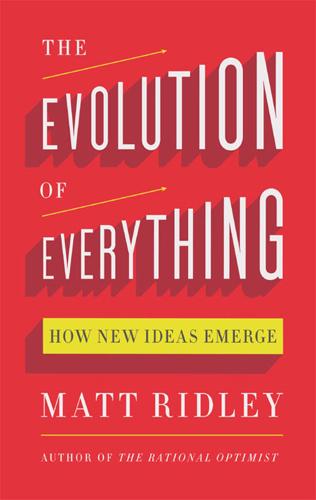
The Evolution of Everything: How New Ideas Emerge
by
Matt Ridley
The leading Irish scientist Richard Kirwan even went as far as to hint that ideas like Hutton’s contributed to dangerous events like the French Revolution, remarking on how they had ‘proved too favourable to the structure of various systems of atheism or infidelity, as these have been in their turn to turbulence and immorality’. No need of that hypothesis The physicists, who had set the pace in tearing down skyhooks, continued to surprise the world. It fell to Pierre-Simon Laplace (using Emilie du Châtelet’s improvements to cumbersome Newtonian geometry) to take Newtonism to its logical conclusion. Laplace argued that the present state of the universe was ‘the effect of its past and the cause of its future’. If an intellect were powerful enough to calculate every effect of every cause, then ‘nothing would be uncertain and the future just like the past would be present before its eyes’.
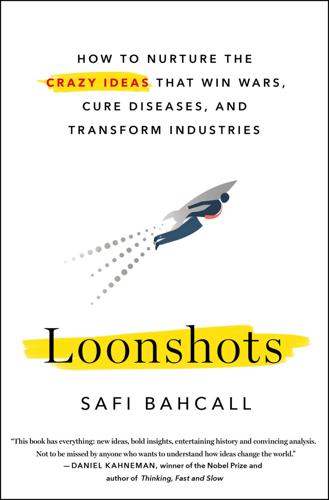
Loonshots: How to Nurture the Crazy Ideas That Win Wars, Cure Diseases, and Transform Industries
by
Safi Bahcall
Published 19 Mar 2019
Gottfried Leibniz, for example, developed calculus independently, in Germany, around the same time as Newton. Christiaan Huygens, in the Netherlands, developed the idea of centripetal force, the wave theory of light, modern probability theory—and he invented the pendulum clock. Daniel Bernoulli in Switzerland, Leonhard Euler in Germany, Pierre-Simon Laplace in France—all were giants of mathematics and physics who arrived not long after Newton. The Royal Society helped Newton and England win a race against time, a competition to discover truths of nature. But the Society didn’t come together purely for basic research: “Science was to be fostered and nurtured as leading to the improvement of man’s lot on earth by facilitating technologic invention.”

Super Thinking: The Big Book of Mental Models
by
Gabriel Weinberg
and
Lauren McCann
Published 17 Jun 2019
This chapter is about helping you think about wading through such uncertainty in the context of decision making. What advice should you listen to and why? Probability and statistics are the branches of mathematics that give us the most useful mental models for these tasks. As French mathematician Pierre-Simon Laplace wrote in his 1812 book Théorie Analytique des Probabilités: “The most important questions of life are indeed, for the most part, really only problems of probability.” We will discuss the useful mental models from the fields of probability and statistics along with common traps to avoid.

Rationality: What It Is, Why It Seems Scarce, Why It Matters
by
Steven Pinker
Published 14 Oct 2021
When I was a research assistant in an animal behavior lab, the refrigerator-sized minicomputers of the day were too slow to generate random-looking numbers in real time, and my supervisor had invented a gadget with a capsule filled with a radioactive isotope and a teensy-weensy Geiger counter that detected the intermittent particle spray and tripped a switch that fed the pigeon.4 But in most of the intermediate-sized realm in which we spend our days, quantum effects cancel out and may as well not exist. So how could randomness arise in a world of billiard balls obeying Newton’s equations? As the 1970s poster proclaimed (satirizing billboards about the speed limit), “Gravity. It isn’t just a good idea. It’s the law.”5 In theory, couldn’t the demon imagined by Pierre-Simon Laplace in 1814, who knew the position and momentum of every particle in the universe, plug them into equations for the laws of physics and predict the future perfectly? In reality, there are two ways in which a law-governed world can generate events that for all intents and purposes are random.
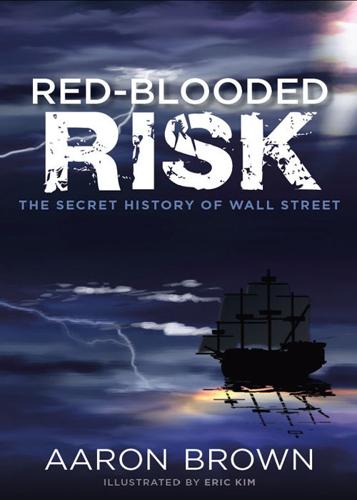
Red-Blooded Risk: The Secret History of Wall Street
by
Aaron Brown
and
Eric Kim
Published 10 Oct 2011
This is how we turn an event that has already happened—drawing nine red marbles out of 10—into a hypothetical coin-flip gambling game that can be repeated indefinitely. The main alternative to frequentist statistics today is the Bayesian view. It is named for Thomas Bayes, an eighteenth-century theorist, but it was Pierre-Simon Laplace who put forth the basic ideas. It was not until the twentieth century, however, that researchers, including Richard Cox and Bruno de Finetti, created the modern formulation. In the Bayesian view of the urn, you must have some prior belief about the number of red marbles in the urn. For example, you might believe that any number from 0 to 100 red marbles is equally likely.
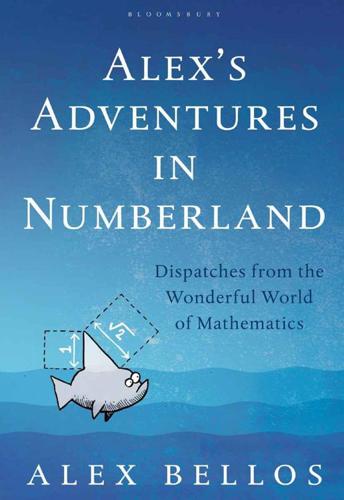
Alex's Adventures in Numberland
by
Alex Bellos
Published 3 Apr 2011
Buffon came up with the following alternative scenario: imagine that a floor is marked with parallel lines spaced evenly apart and that a needle is thrown on it. He then correctly calculated that if the length of the needle is l and the distance between lines is d, then the following equation holds: Probability of the needle touching the line = A few years after Buffon died, Pierre Simon Laplace realized that this equation could be used to estimate a value for pi. If you throw lots and lots of needles on the floor, then the ratio of the number of times that the needle hits the line to the total number of throws will be approximately equal to the mathematical probability of the needle touching the line.
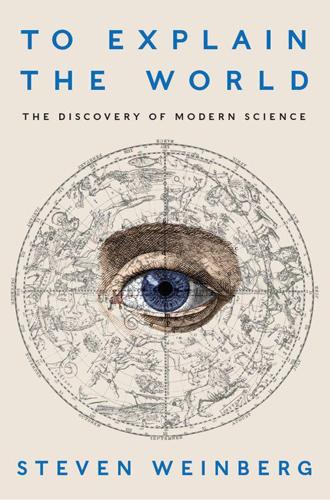
To Explain the World: The Discovery of Modern Science
by
Steven Weinberg
Published 17 Feb 2015
The Newtonian theory certainly provided a common meeting ground for astronomers trying to explain observations that went beyond Kepler’s laws. The methods for applying Newton’s theory to problems involving more than two bodies were developed by many authors in the late eighteenth and early nineteenth centuries. There was one innovation of great future importance that was explored especially by Pierre-Simon Laplace in the early nineteenth century. Instead of adding up the gravitational forces exerted by all the bodies in an ensemble like the solar system, one calculates a “field,” a condition of space that at every point gives the magnitude and direction of the acceleration produced by all the masses in the ensemble.

Civilization: The West and the Rest
by
Niall Ferguson
Published 28 Feb 2011
… [Spare] not these bloody despots / … All these tigers who pitilessly / Ripped out their mothers’ wombs!’ † Now Slavkov in the Czech Republic, Austerlitz was the scene of the battle that prompted Napoleon to commission the Arc de Triomphe. * At the Ecole Militaire in Paris, Napoleon had been examined by Pierre-Simon Laplace, one of the pioneers of the mathematics of probability. * Compare Eugène Delacroix’s Liberty Leads the People (1830) with Egide, Baron Wappers’s Episode of the Belgian Revolution of 1830 (1835) and (among many twentieth-century examples) the Mexican Diego Rivera’s The Arsenal (1928). † Wagner had, according to his autobiography, ‘conceive[d] the plan of a tragedy for the ideal stage of the future, entitled Jesus of Nazareth.

Computer: A History of the Information Machine
by
Martin Campbell-Kelly
and
Nathan Ensmenger
Published 29 Jul 2013
His researches were mainly mathematical, and in 1816 his achievements were recognized by his election to the Royal Society, the leading scientific organization in Britain. He was then twenty-five—an enfant terrible with a growing scientific reputation. In 1819 Babbage made the first of several visits to Paris, where he met a number of the leading members of the French Scientific Academy, such as the mathematicians Pierre-Simon Laplace and Joseph Fourier, with whom he formed lasting friendships. It was probably during this visit that Babbage learned of the great French table-making project organized by Baron Gaspard de Prony. This project would show Babbage a vision that would determine the future course of his life. De Prony began the project in 1790, shortly after the French Revolution.
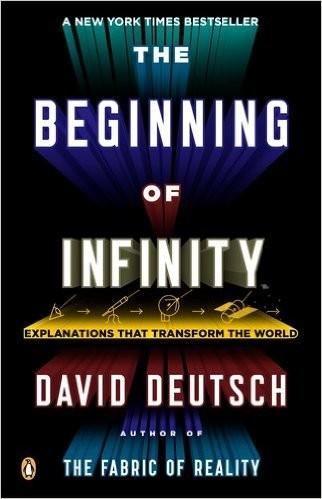
The Beginning of Infinity: Explanations That Transform the World
by
David Deutsch
Published 30 Jun 2011
But, if Archimedes had been willing to allow his rules to be applied without arbitrary limits, he could have invented a much better universal system just by removing the arbitrary limits from the existing Greek system. A few years later the mathematician Apollonius invented yet another system of numerals which fell short of universality for the same reason. It is as though everyone in the ancient world was avoiding universality on purpose. The mathematician Pierre Simon Laplace (1749–1827) wrote, of the Indian system, ‘We shall appreciate the grandeur of this achievement when we remember that it escaped the genius of Archimedes and Apollonius, two of the greatest minds produced by antiquity.’ But was this really something that escaped them, or something that they chose to steer clear of?
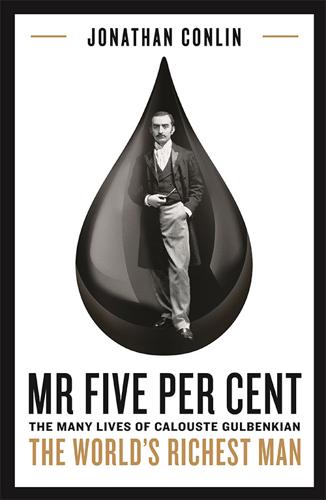
Mr Five Per Cent: The Many Lives of Calouste Gulbenkian, the World's Richest Man
by
Jonathan Conlin
Published 3 Jan 2019
In Lisbon, however, restrictions placed on his currency movements by the British and American authorities continued to tie Gulbenkian’s hands, making it difficult to acquire new items for his collection. It took over a year for him to make arrangements to pay Henri de Rothschild for his portrait of the astronomer Pierre-Simon Laplace by Lépicié and for another portrait by Nattier. Henri’s grandmother had formed a renowned collection of works by Chardin and other eighteenth-century French artists, which Gulbenkian had admired at La Muette in Paris thirty years before. At the outbreak of war these paintings were moved to London, where the majority were destroyed in the Blitz.

Blueprint: The Evolutionary Origins of a Good Society
by
Nicholas A. Christakis
Published 26 Mar 2019
Bloom, How Pleasure Works: The New Science of Why We Like What We Like (New York: W. W. Norton, 2010); S. A. Gelman, The Essential Child: Origins of Essentialism in Everyday Thought (New York: Oxford University Press, 2010). 40. In the end, we would get Laplace’s Demon. For “such an intellect,” French mathematician Pierre-Simon Laplace argued in 1814, “nothing would be uncertain and the future just like the past would be present before its eyes.” P. S. Laplace, A Philosophical Essay on Probabilities, 6th ed., trans. F. W. Truscott and F. L. Emory (New York: Dover, 1951), p. 4. 41. There is actually much debate about whether the idea that the world obeys natural laws and is predictable can be reconciled with the idea that humans can truly have free will.
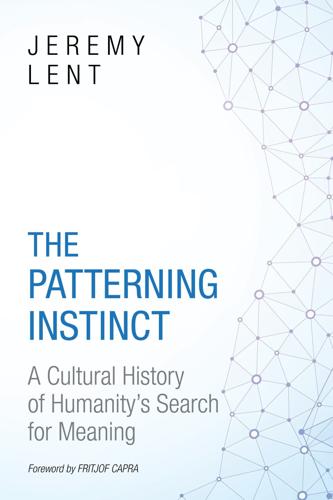
The Patterning Instinct: A Cultural History of Humanity's Search for Meaning
by
Jeremy Lent
Published 22 May 2017
It was the winter of 1961, and while another snowstorm was threatening outside, Lorenz was busy constructing his own model of the weather on a state-of-the-art computer installed in his office, replete with vacuum tubes and a spaghetti of wires. Lorenz was on the cutting edge of the scientific endeavor to decipher the hidden mechanisms of nature. Back in the eighteenth century, mathematician Pierre-Simon Laplace had proposed that the universe was completely deterministic and, given enough information, it was theoretically possible to predict the movement of every atom. Scientists ever since had been inspired by this vision, analyzing nature's building blocks with the goal of predicting exactly how they worked.

The Gene: An Intimate History
by
Siddhartha Mukherjee
Published 16 May 2016
Already, the bare outline of an idea was coalescing in his mind—a notion so simple, and yet so deeply radical, that no biologist had dared to explore it fully: What if all the finches had arisen from a common ancestral finch? What if the small armadillos of today had arisen from a giant ancestral armadillo? Lyell had argued that the current landscape of the earth was the consequence of natural forces that had accumulated over millions of years. In 1796, the French physicist Pierre-Simon Laplace had proposed that even the current solar system had arisen from the gradual cooling and condensation of matter over millions of years (when Napoléon had asked Laplace why God was so conspicuously missing from his theory, Laplace had replied with epic cheekiness: “Sire, I had no need for that hypothesis”).
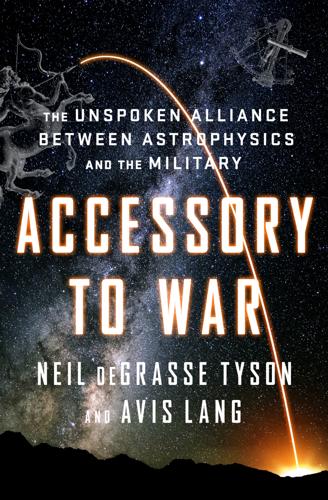
Accessory to War: The Unspoken Alliance Between Astrophysics and the Military
by
Neil Degrasse Tyson
and
Avis Lang
Published 10 Sep 2018
Baudry, 1854–62), 4–5, trans. Stéphan Reebs and Avis Lang. 97.Arago, “Fixation des images,” 6; Gérard de Vaucouleurs, Astronomical Photography: From the Daguerreotype to the Electron Camera, trans. R. Wright (New York: Macmillan, 1961), 13–16. Arago’s two collaborators in the Moon-imaging experiment were Pierre-Simon Laplace and Étienne-Louis Malus (who was part of Napoleon’s invasion of Egypt). The urging of Daguerre was done by a triad—Arago, Jean-Baptiste Biot, and Alexander von Humboldt—whom de Vaucouleurs describes as “his three renowned physicist-astronomer confidants in the Academy.” 98.François Arago, “Report” (1839), in Classic Essays in Photography, ed.

Rationality: From AI to Zombies
by
Eliezer Yudkowsky
Published 11 Mar 2015
The endless grid of robed figures replied in one voice: perfectly blended, exactly synchronized, so that not a single individual could be singled out from the rest, and betrayed: “Who is absent?” “Jakob Bernoulli,” intoned the guide, and the walls replied: “Is dead but not forgotten.” “Abraham de Moivre,” “Is dead but not forgotten.” “Pierre-Simon Laplace,” “Is dead but not forgotten.” “Edwin Thompson Jaynes,” “Is dead but not forgotten.” “They died,” said the guide, “and they are lost to us; but we still have each other, and the project continues.” In the silence, the guide turned to Brennan, and stretched forth a hand, on which rested a small ring of nearly transparent material.
…
We take the logarithm to simplify our intuitive understanding of the accumulated score, to maintain our grip on the tiny fractions involved, and to ensure we maximize our expected score by stating our honest probabilities rather than placing all our play money on the most probable bet. Bayesianity states that when you die, Pierre-Simon Laplace examines every single event in your life, from finding your shoes next to your bed in the morning to finding your workplace in its accustomed spot. Every losing lottery ticket means you cared enough to play. Laplace assesses the advance probability you assigned to each event. Where you did not assign a precise numerical probability in advance, Laplace examines your degree of anticipation or surprise, extrapolates other possible outcomes and your extrapolated reactions, and renormalizes your extrapolated emotions to a likelihood distribution over possible outcomes.

The Stack: On Software and Sovereignty
by
Benjamin H. Bratton
Published 19 Feb 2016
In twelfth century Majorca, Ramon Llull described logical machines, influencing Gottfried Leibniz, who developed a predictive calculus and a biliteral alphabet that, drawing on the I Ching, allowed for the formal reduction of any complex symbolic expression to a sequence of discrete binary states (zero and one, on and off). Later, the formalization of logic within the philosophy mathematics (from Pierre-Simon Laplace, to Gottlob Frege, Georg Cantor, David Hilbert, and so many others) helped to introduce, inform, and ultimately disprove a version of the Enlightenment as the expression of universal deterministic processes (of both thought and physics). In 1936, with his now-famous paper, “On Computable Numbers, with an Application to the Entscheidungsproblem,” a very young Alan Turing at once introduced the theoretical basis of modern computing and demonstrated the limits of what could and could not ever be calculated and computed by a universal technology.

Artificial Intelligence: A Modern Approach
by
Stuart Russell
and
Peter Norvig
Published 14 Jul 2019
We don't want some of them to have a zero probability while others have a small positive probability; we want to apply smoothing to all the similar n-grams—reserving some of the probability mass of the model for never-seen n-grams, to reduce the variance of the model. The simplest type of smoothing was suggested by Pierre-Simon Laplace in the 18th century to estimate the probability of rare events, such as the sun failing to rise tomorrow. Laplace’s (incorrect) theory of the solar system suggested it was about N = 2 million days old. Going by the data, there were zero out of two million days when the sun failed to rise, yet we don't want to say that the probability is exactly zero.
…
Chomsky’s remarks had the unfortunate effect of scaring many people away from statistical models for two decades, until these models reemerged for use in the field of speech recognition (Jelinek, 1976), and in cognitive science, where optimality theory (Smolensky and Prince, 1993; Kager, 1999) posited that language works by finding the most probable candidate that optimally satisfies competing constraints. Add-one smoothing, first suggested by Pierre-Simon Laplace (1816), was formalized by Jeffreys (1948). Other smoothing techniques include interpolation smoothing (Jelinek and Mercer, 1980), Witten–Bell smoothing (1991), Good–Turing smoothing (Church and Gale, 1991), Kneser–Ney smoothing (1995, 2004), and stupid backoff (Brants et al., 2007). Chen and Goodman (1996) and Goodman (2001) survey smoothing techniques.

Engineering Security
by
Peter Gutmann
, Guy Politzer and Ira Noveck, Journal of Psycholinguistic Research, Vol.20, No.2 (March 1991), p.83. [232] “Task Understanding”, Vittorio Girotto, in “The Nature of Reasoning”, Cambridge University Press, 2004, p.103. [233] “G.W.Leibniz The Art of Controversies”, Marcelo Dascal, Springer Verlag, 2008. Several variations of this are found in Leibniz’ writings, mostly in Latin, and often as undated notes on loose paper. [234] “A Philosophical Essay on Probabilities”, Pierre-Simon Laplace (transl. Frederick Truscott and Frederick Emory, Dover Publications, 1951. [235] “Why Johnny can’t surf (safely)? Attacks and defenses for web users”, Amir Herzberg, Computers & Security, Vol.28, No.1-2 (February/March 2009), p.63. [236] “Influence: Science and Practice”, Robert Cialdini, Allyn and Bacon, 2001. [237] “Perseverance in self perception and social perception: Biased attributional processes in the debriefing paradigm”, Lee Ross, Mark Lepper and Michael Hubbard, Journal of Personality and Social Psychology, Vol.32, No.5 (November 1975), p.880. [238] “Human Inferences: Strategies and Shortcomings of Social Judgment”, Richard Nisbett and Lee Ross, Prentice-Hall, 1980. [239] “Graphology — a total write-off”, Barry Beyerstein, in “Tall Tales about the Mind and Brain: Separating Fact from Fiction”, p.265. [240] “The Fallacy of Personal Validation: A classroom Demonstration of Gullibility”, Bertram Forer, Journal of Abnormal Psychology, Vol.44 (1949), p.118. [241] “The ‘Barnum Effect’ in Personality Assessment: A Review of the Literature”, D.Dickson and I.Kelly, Psychological Reports.